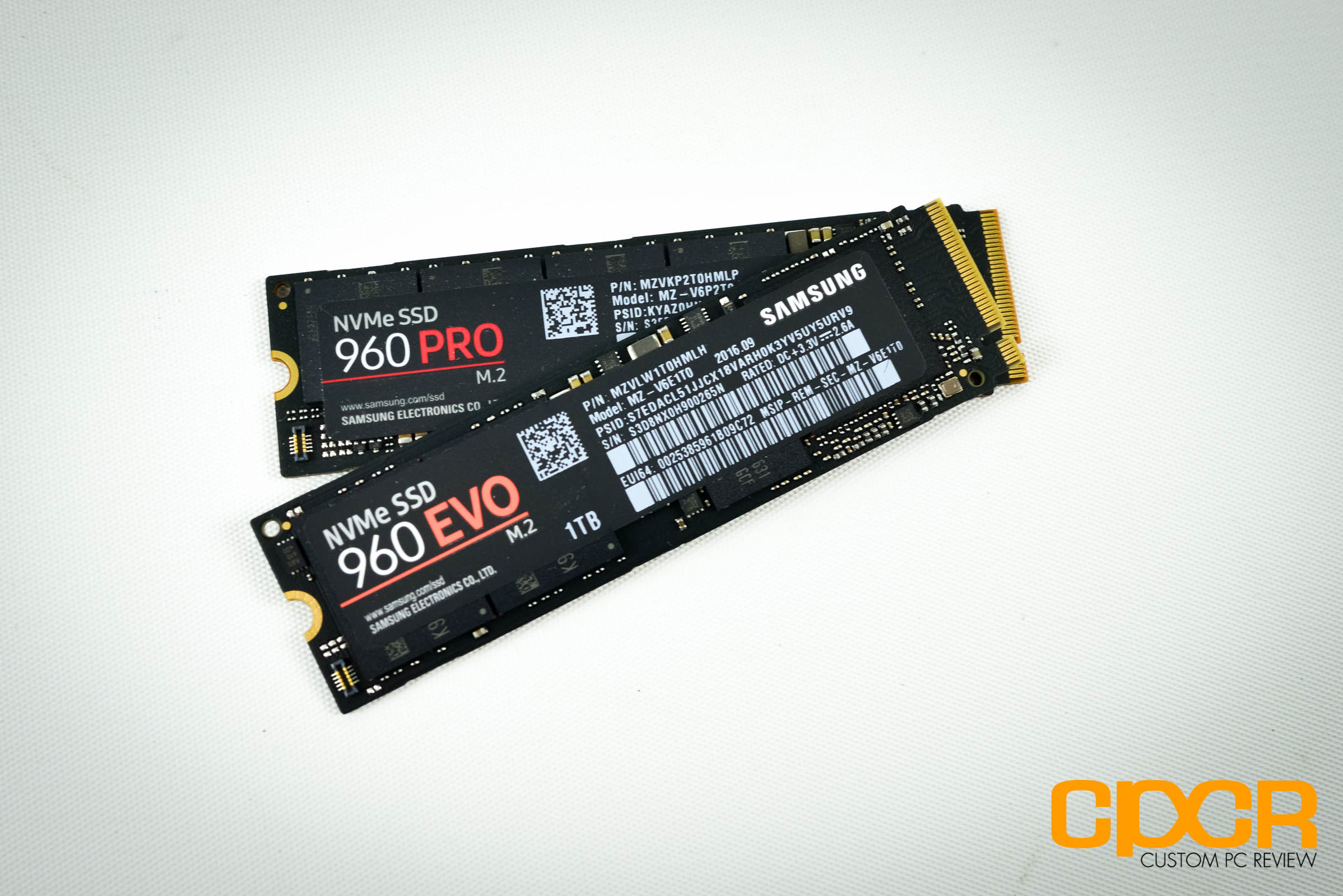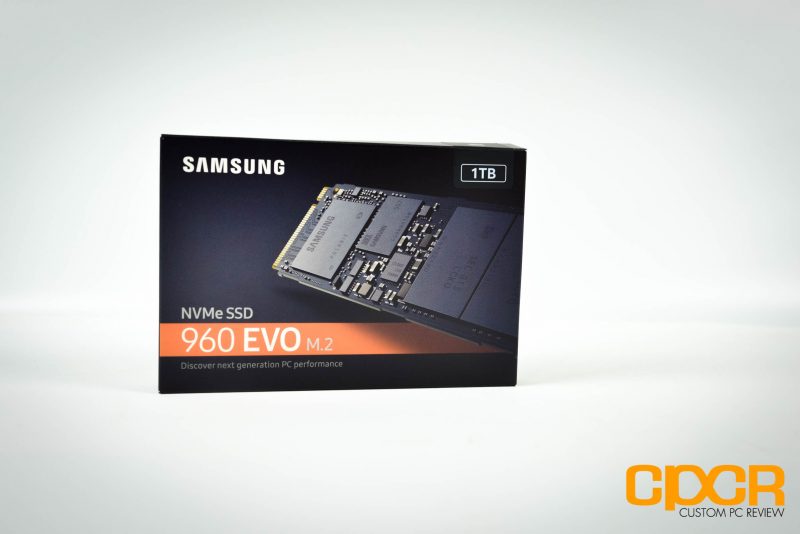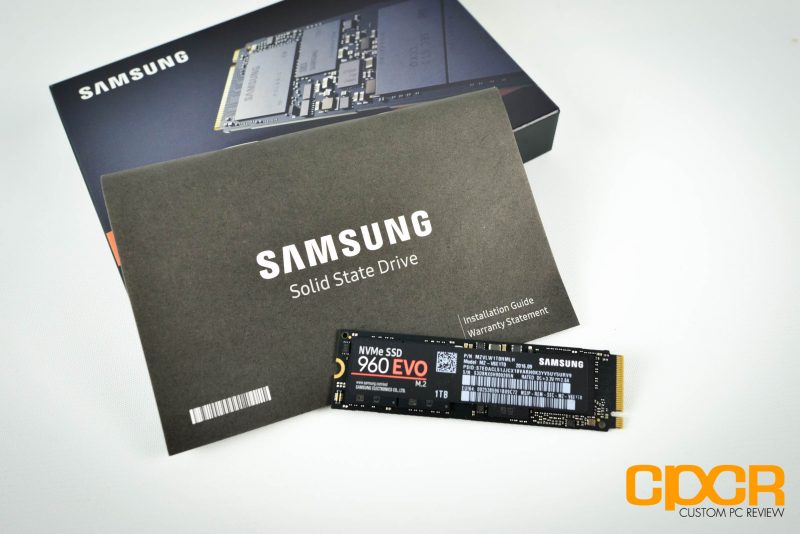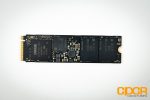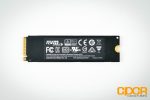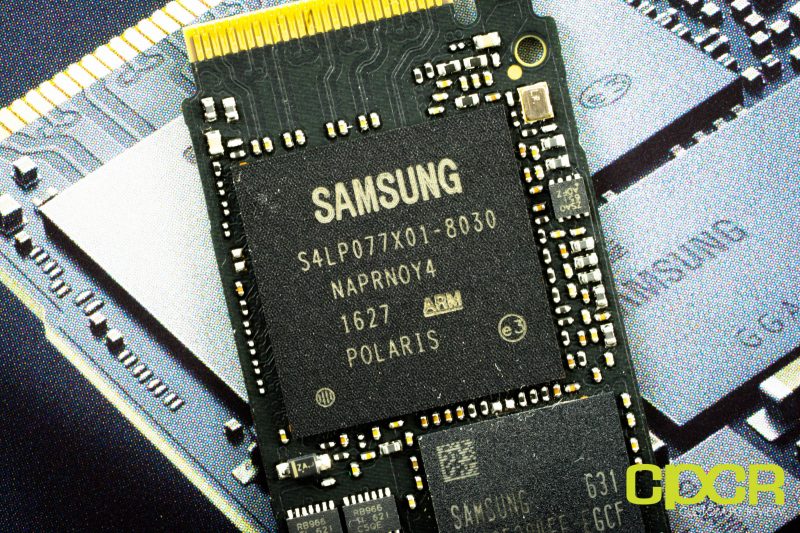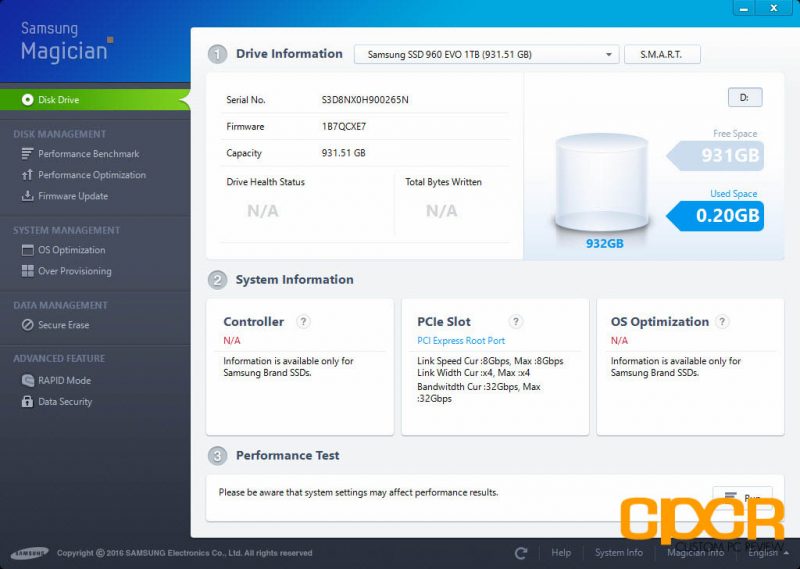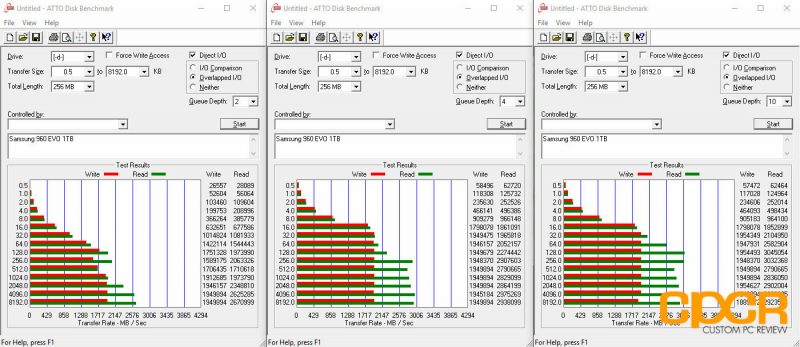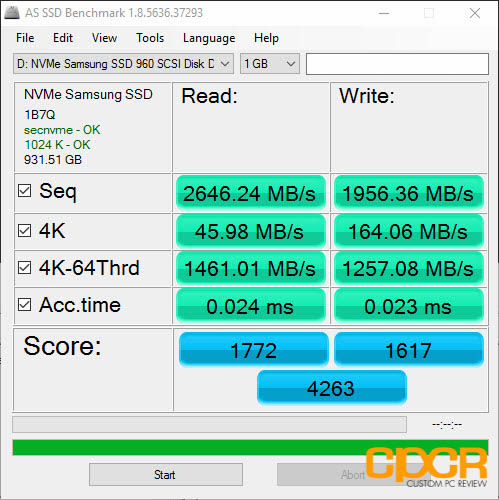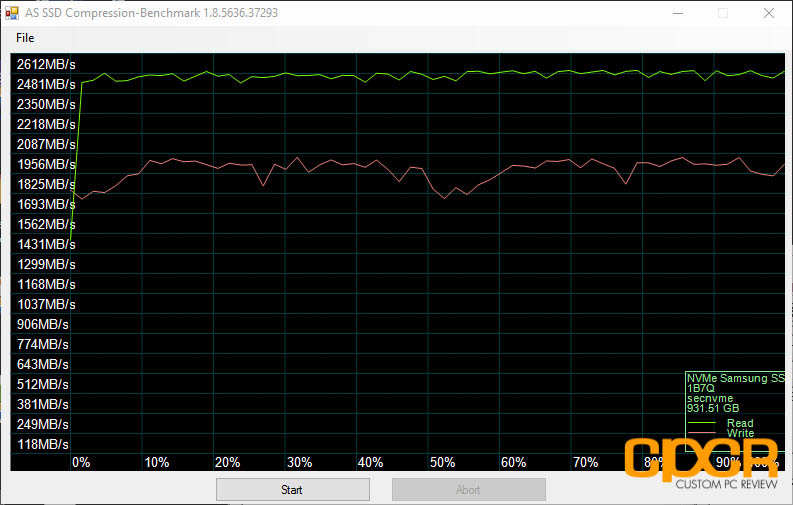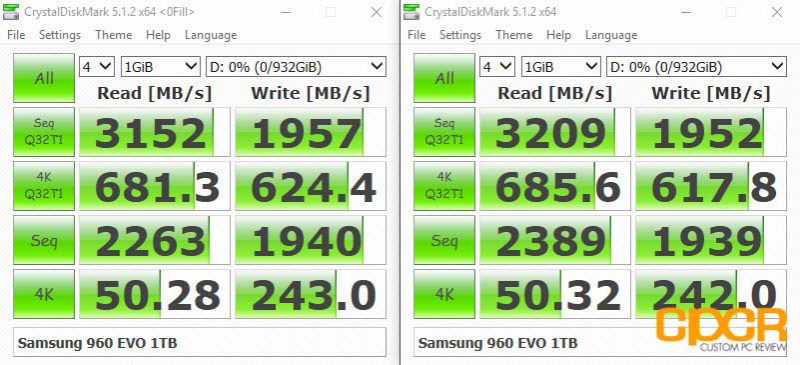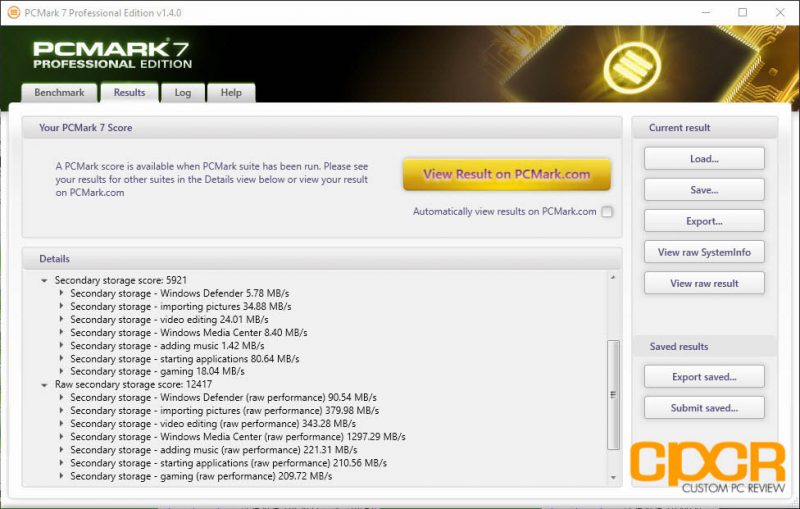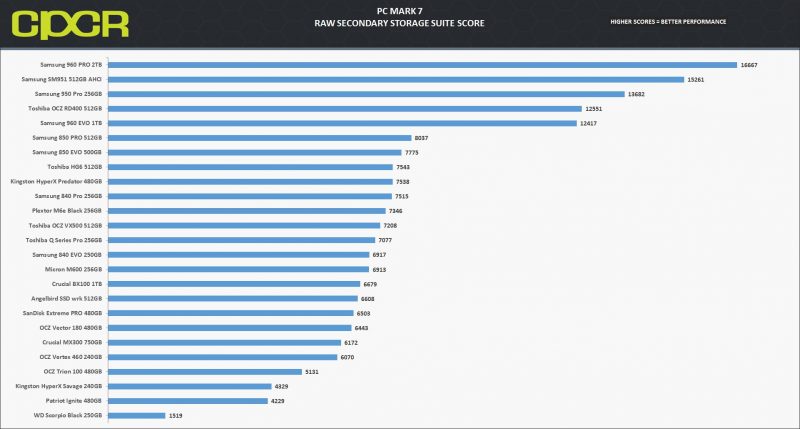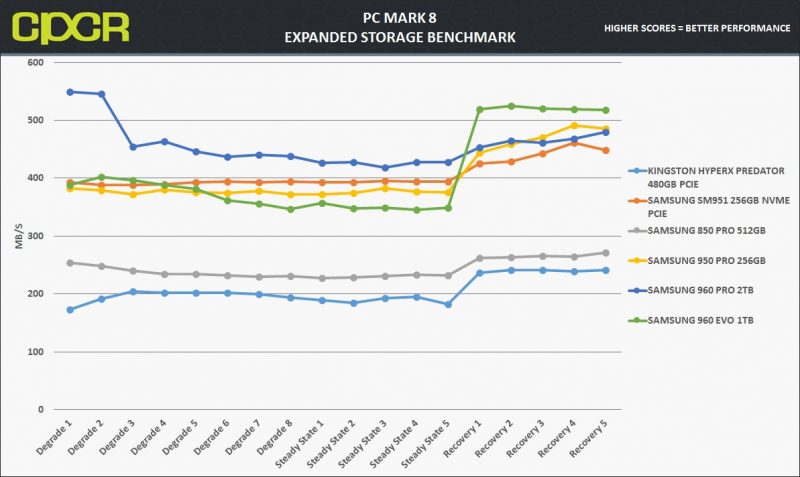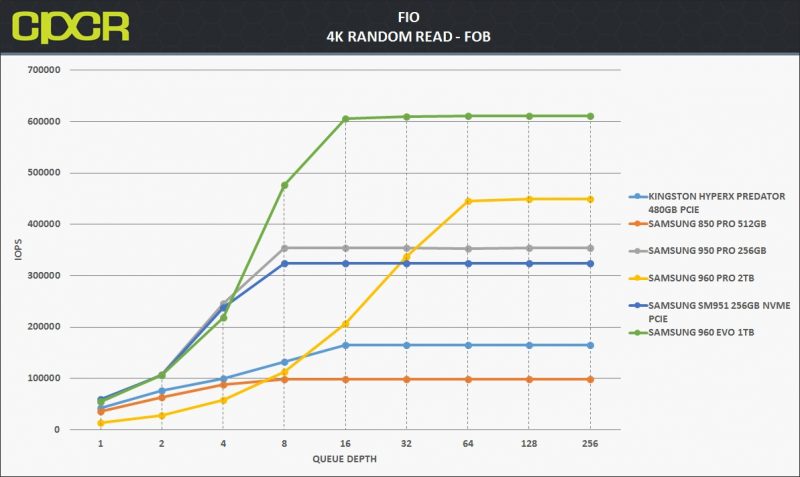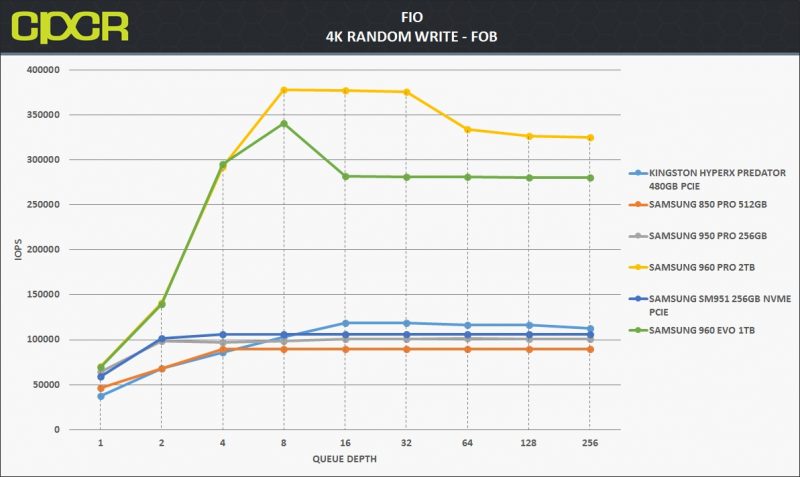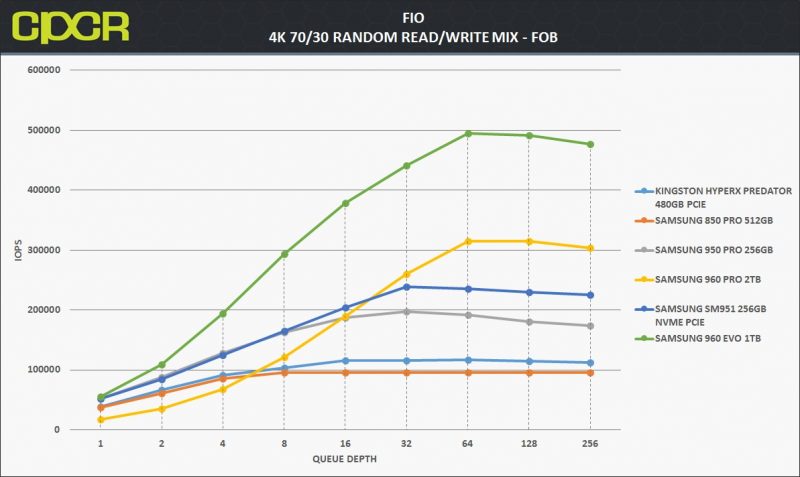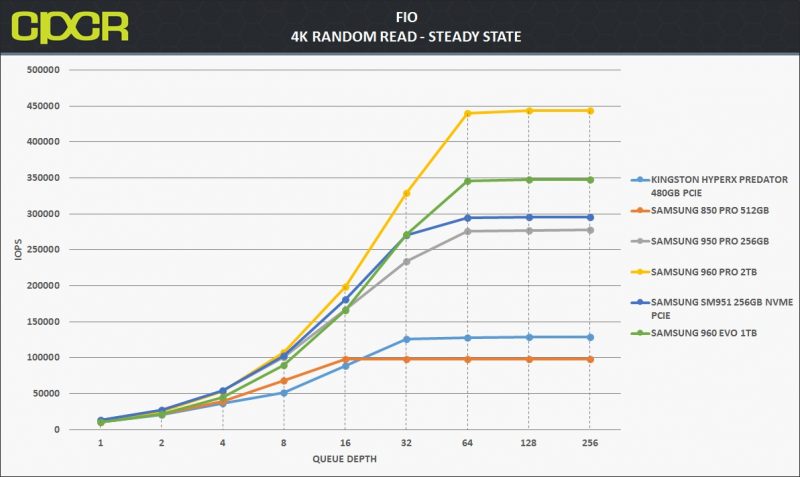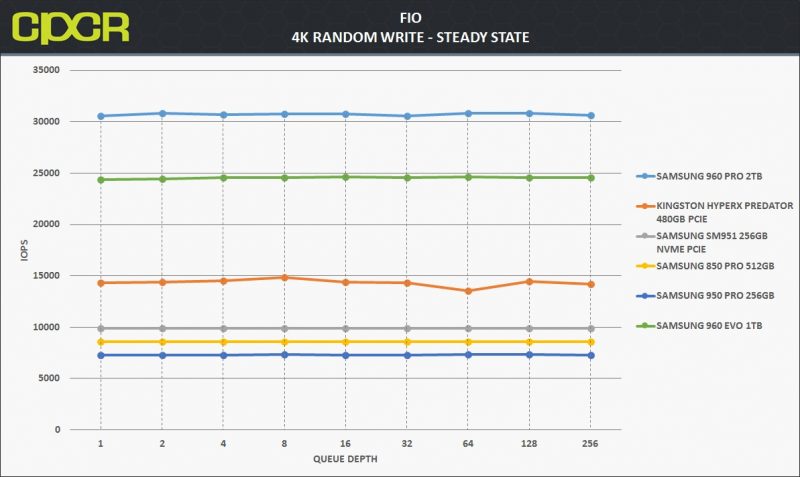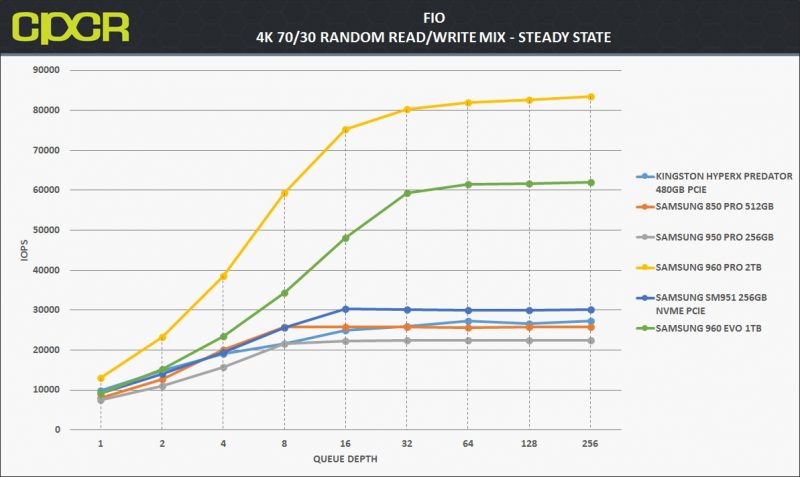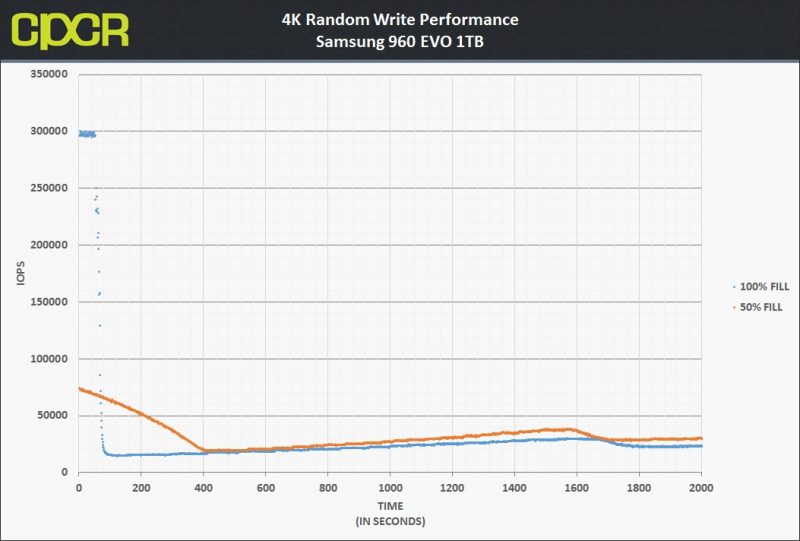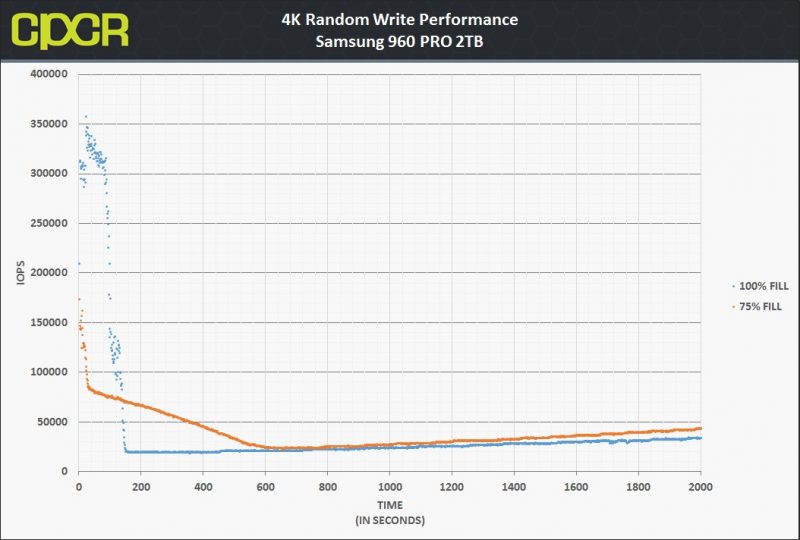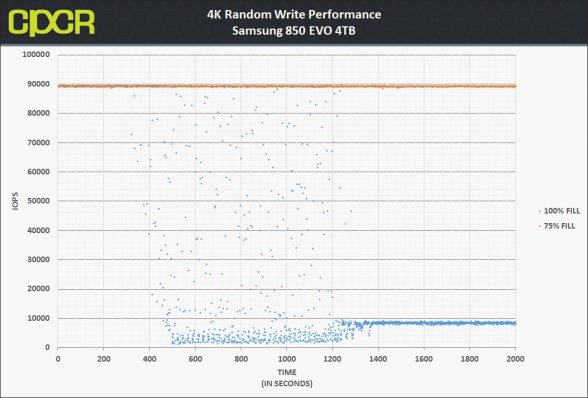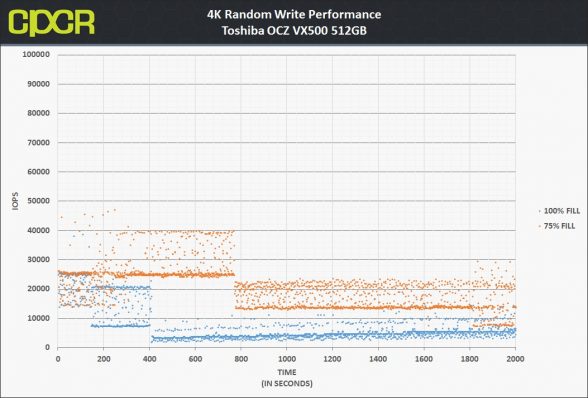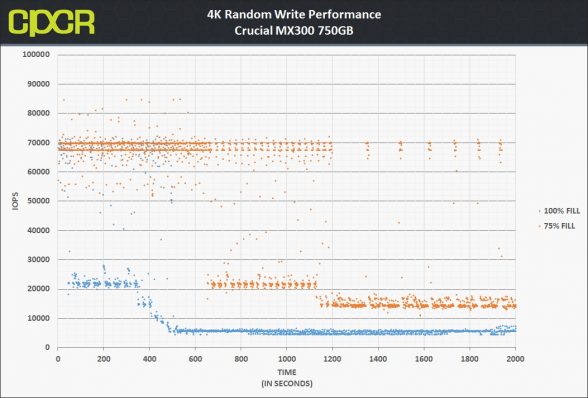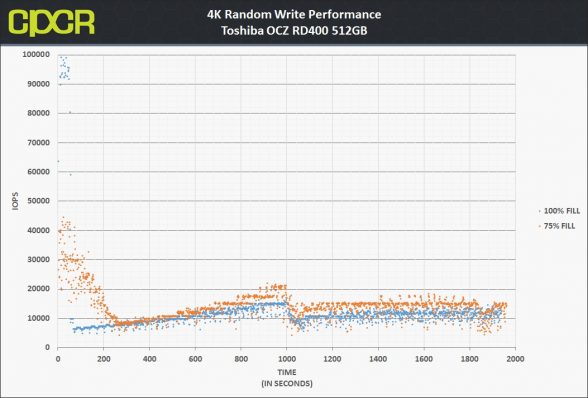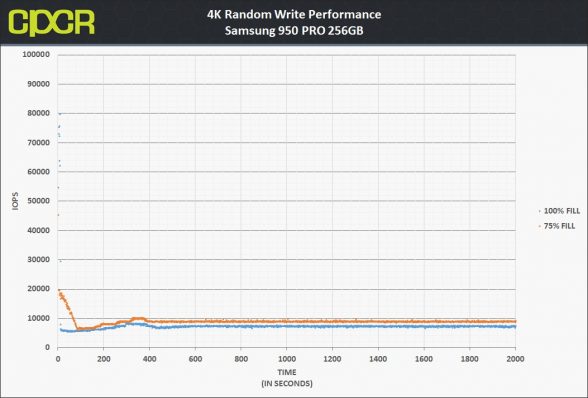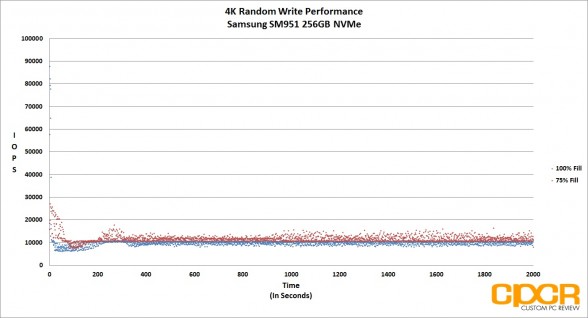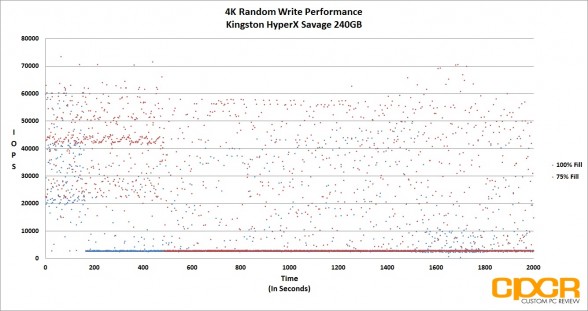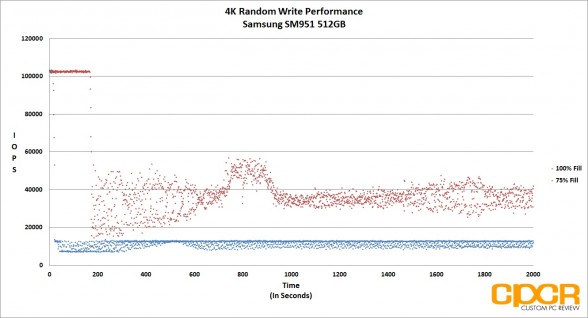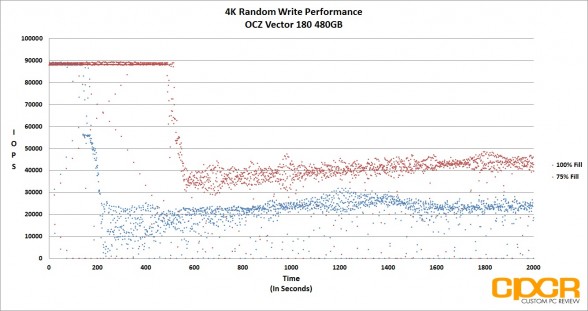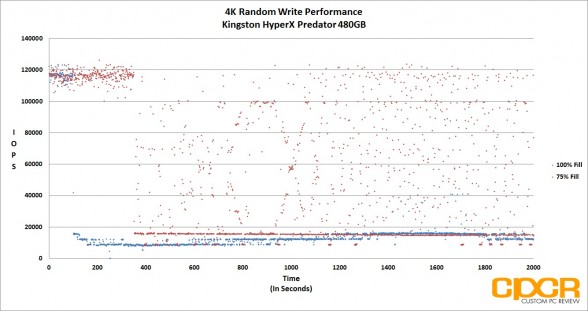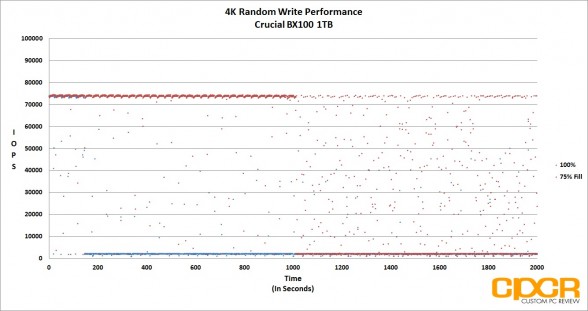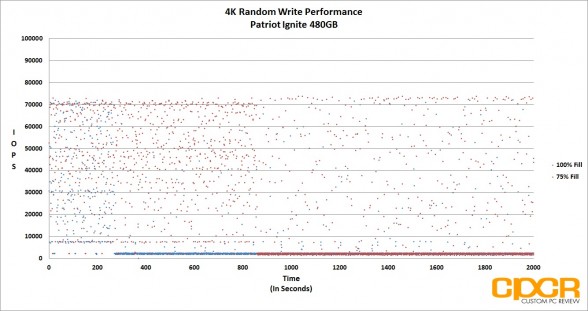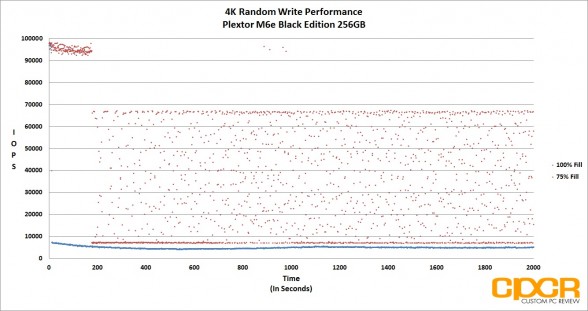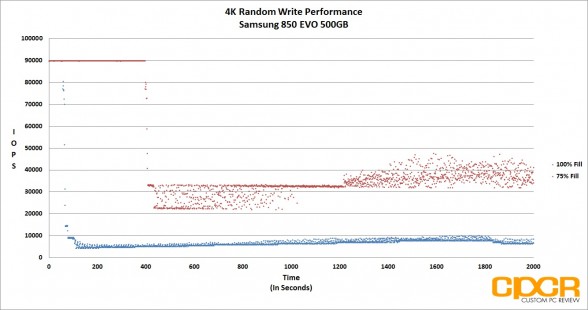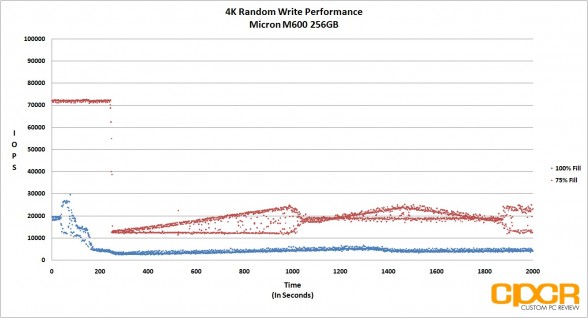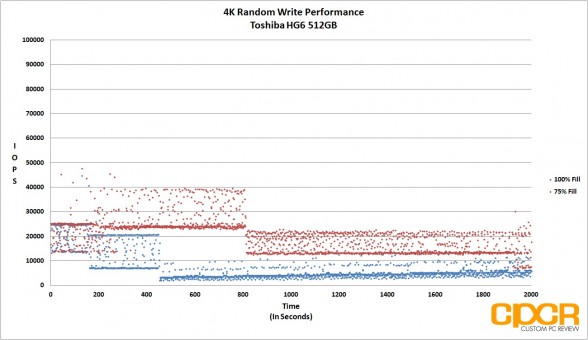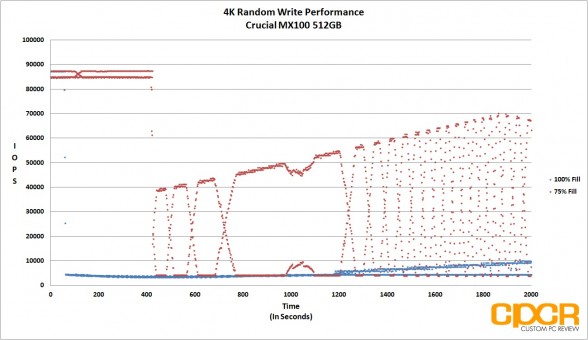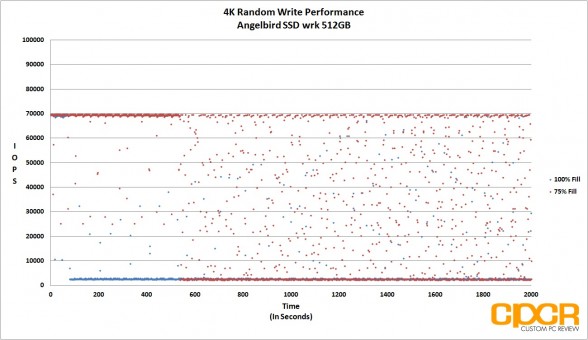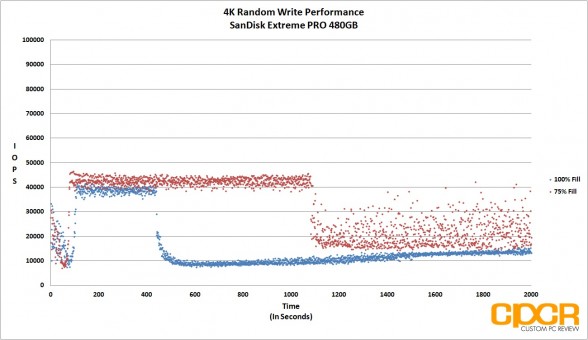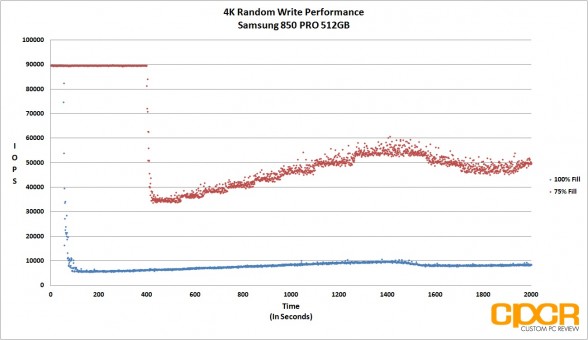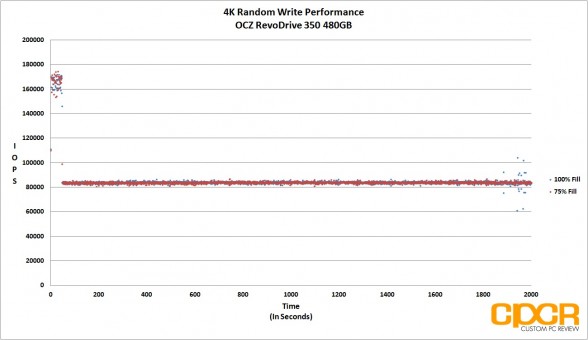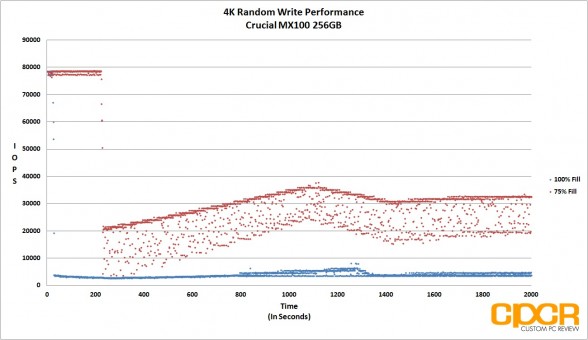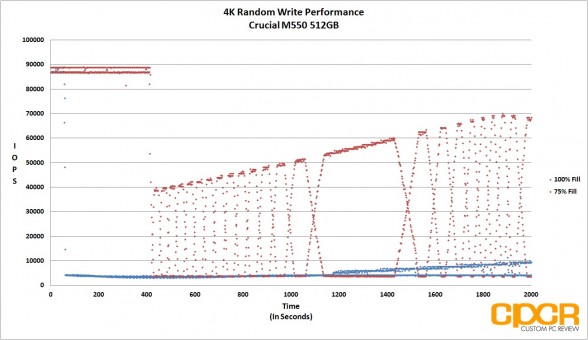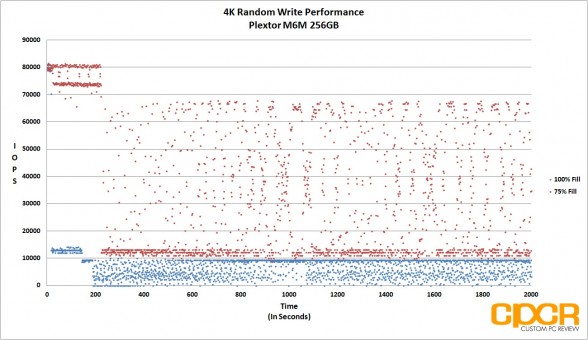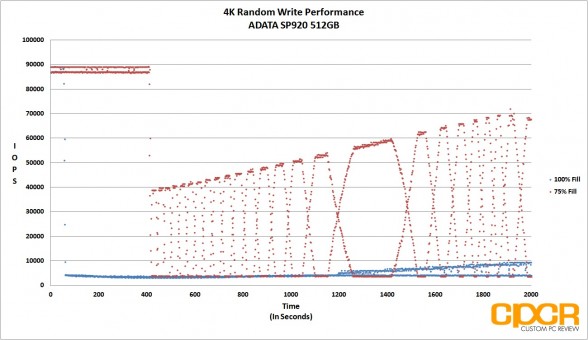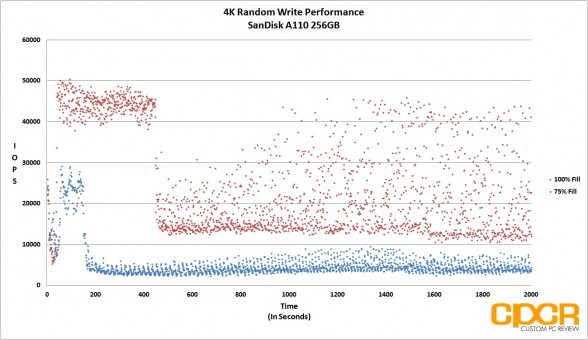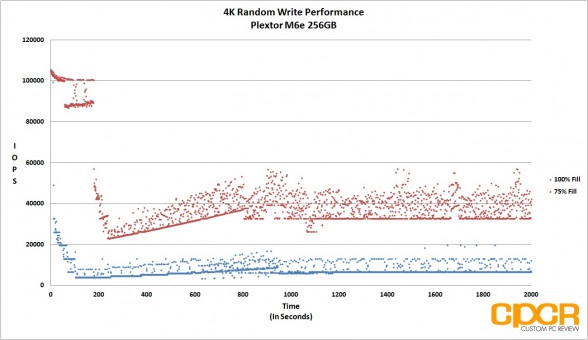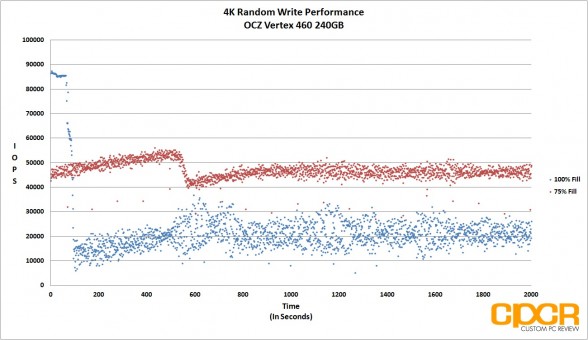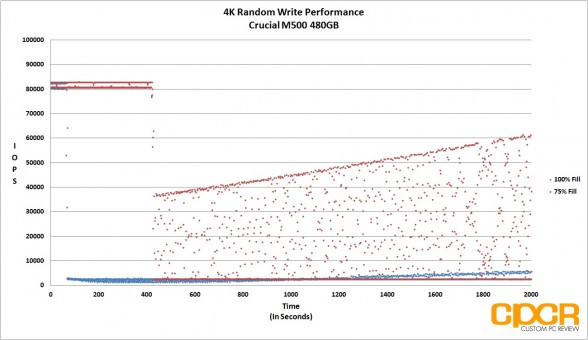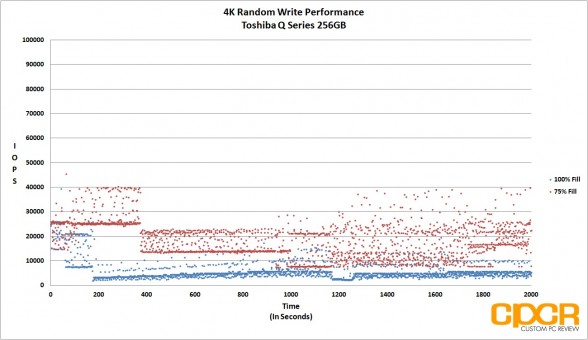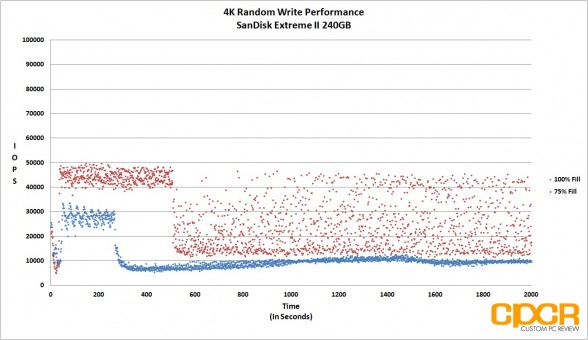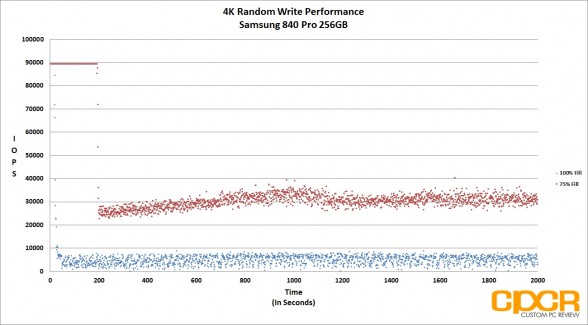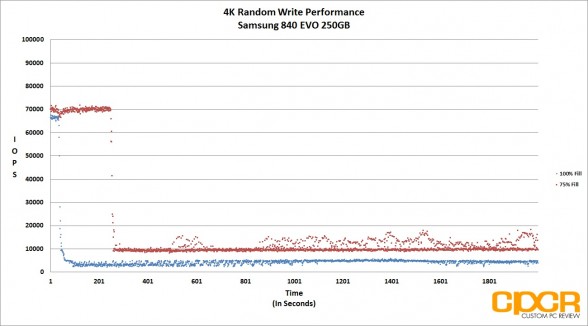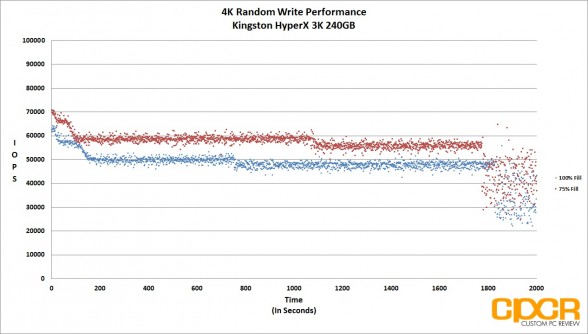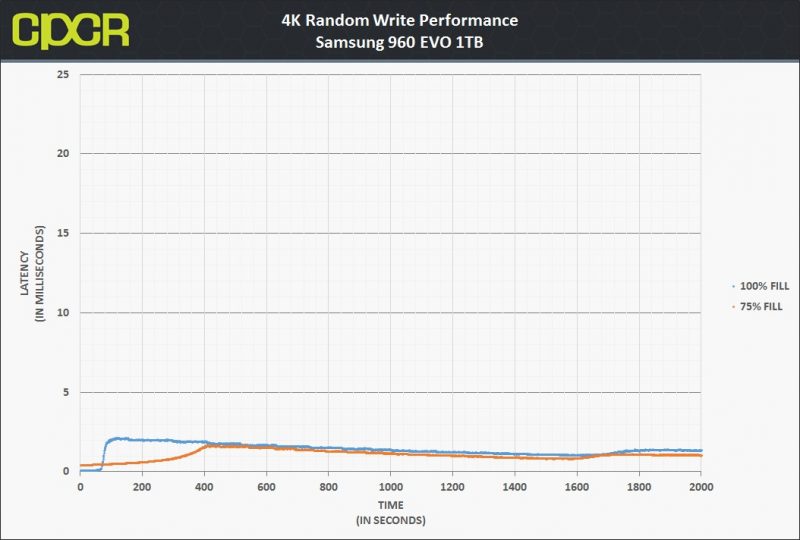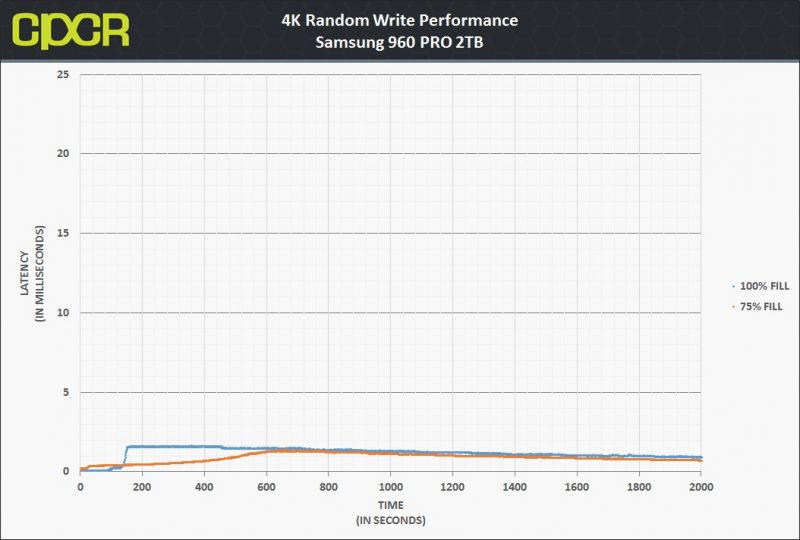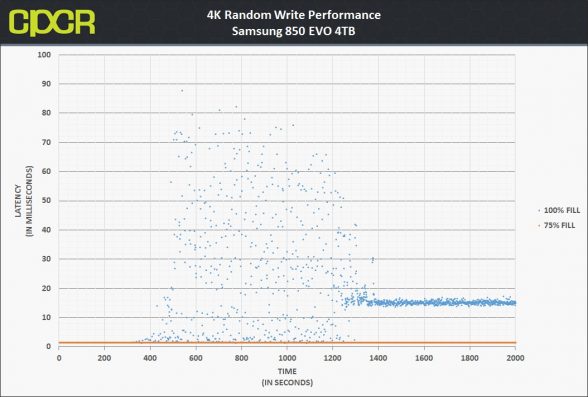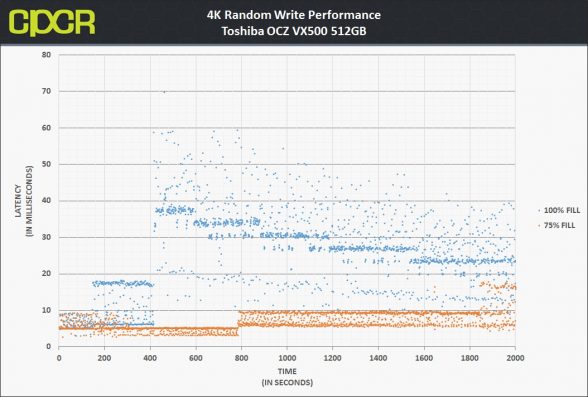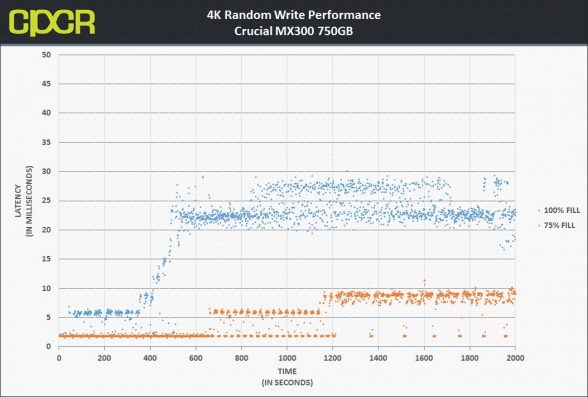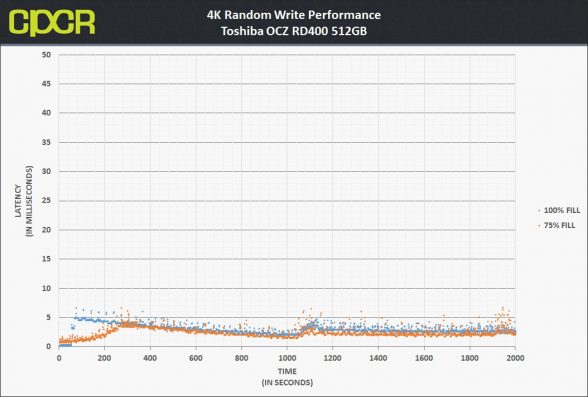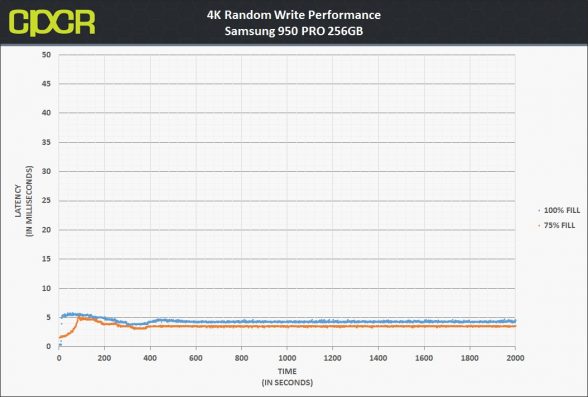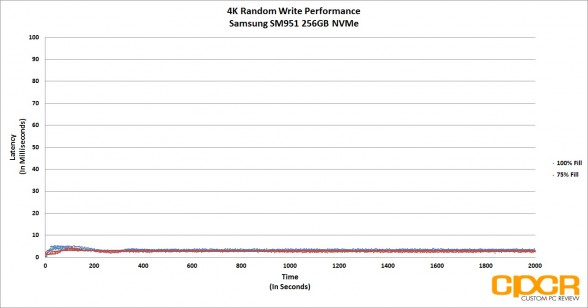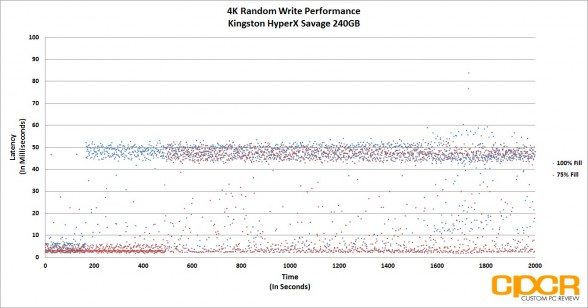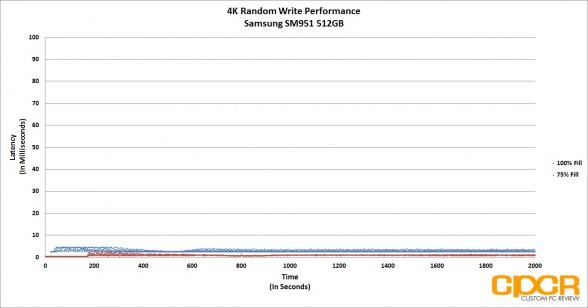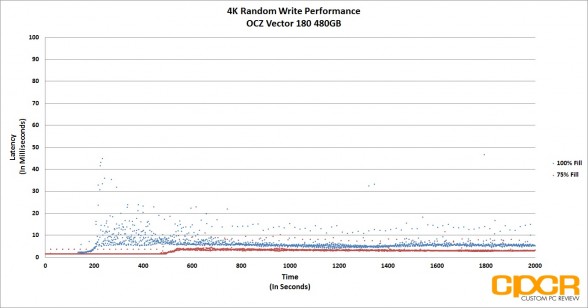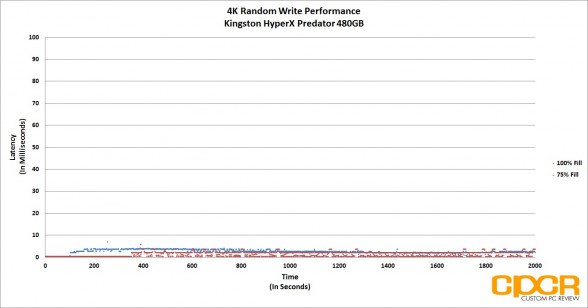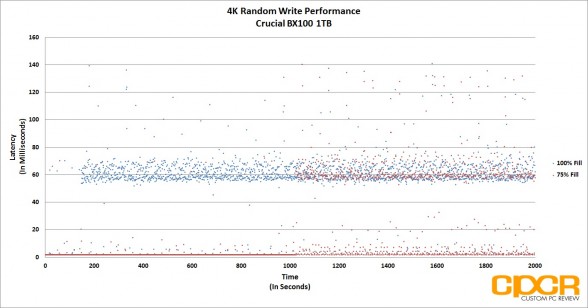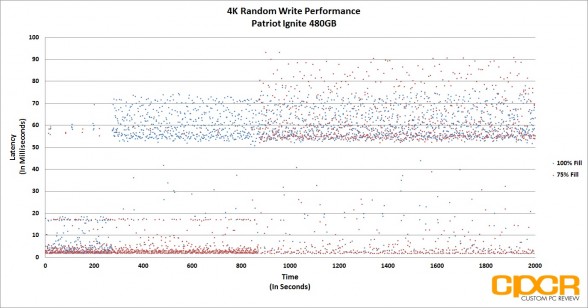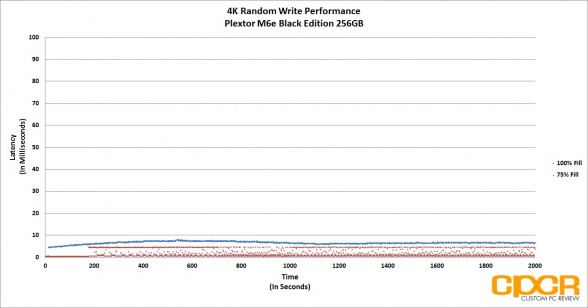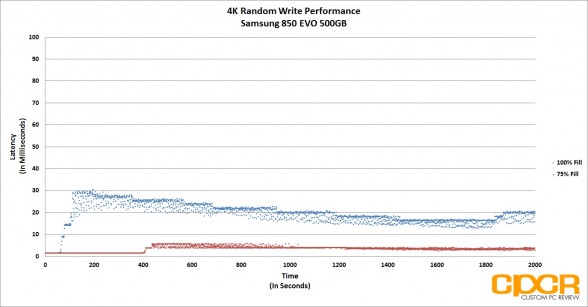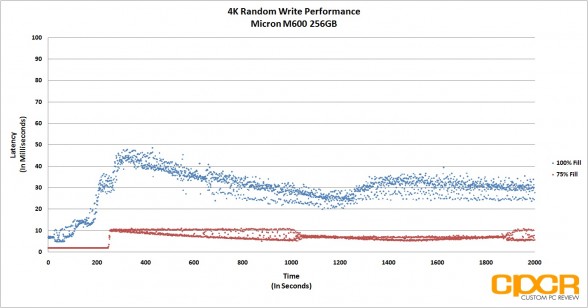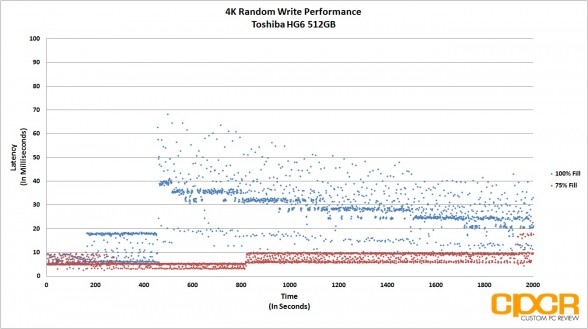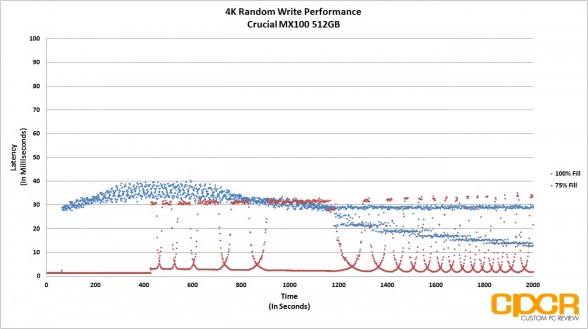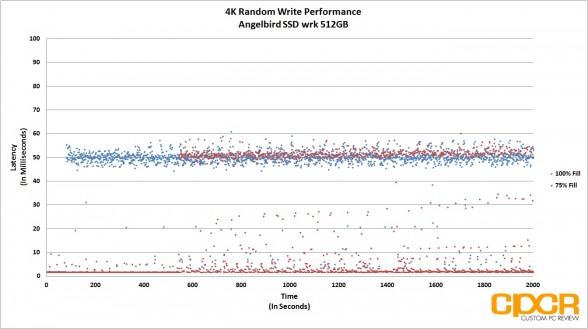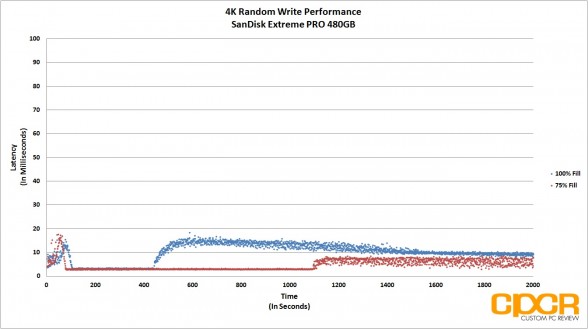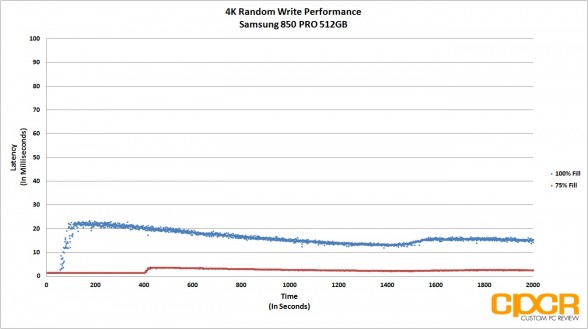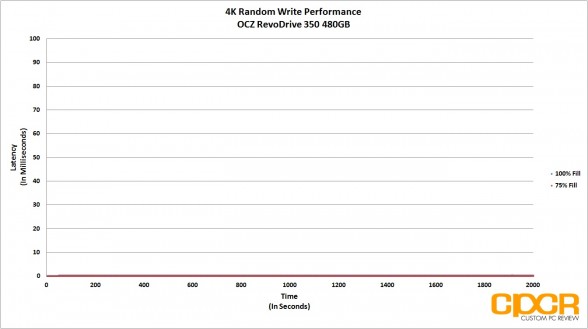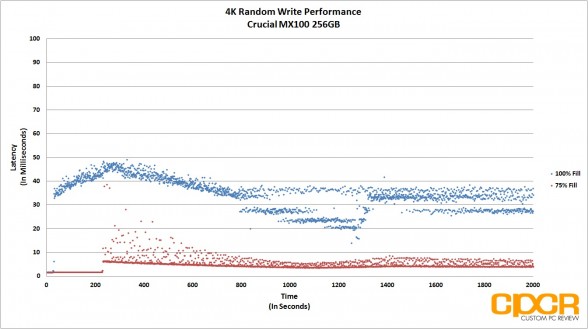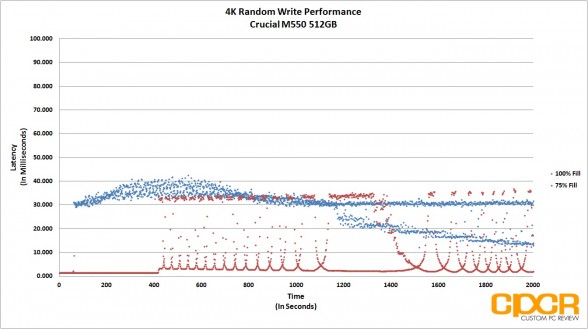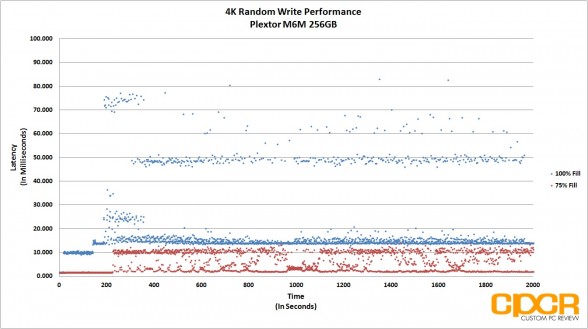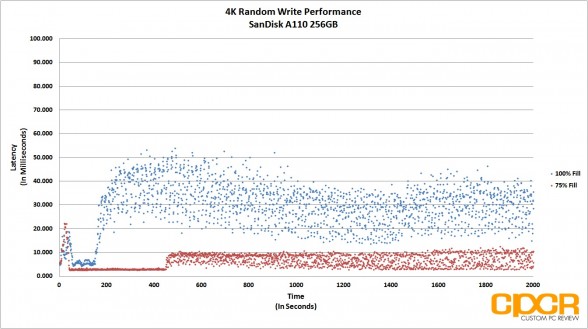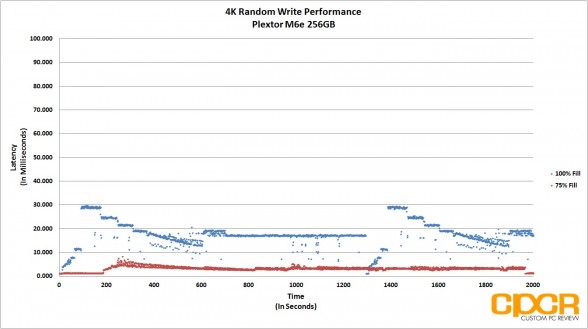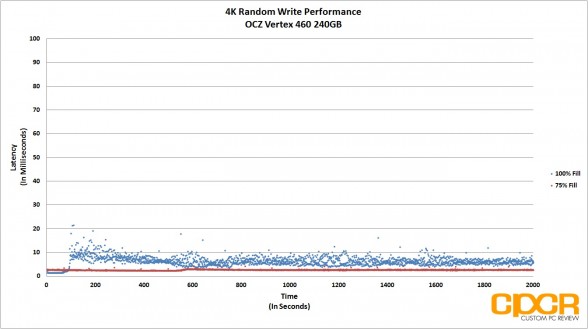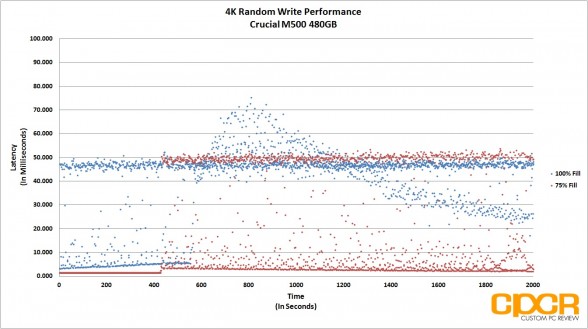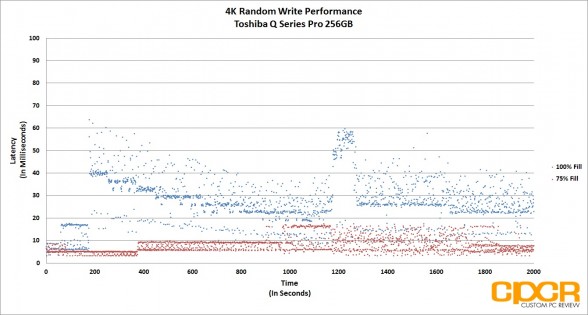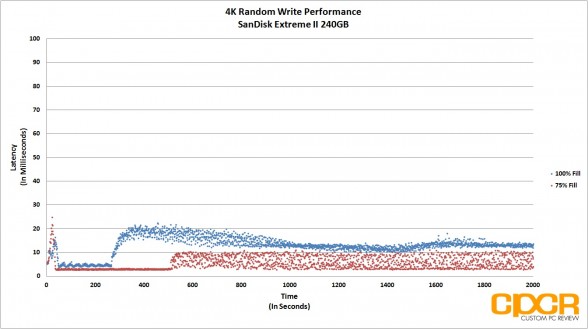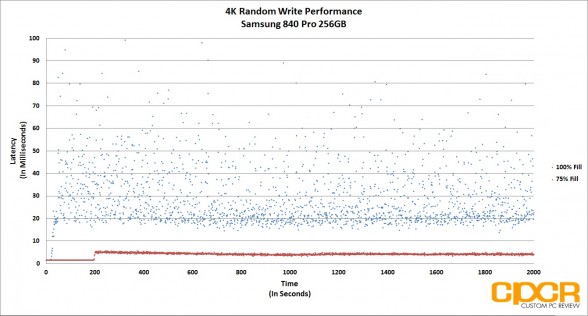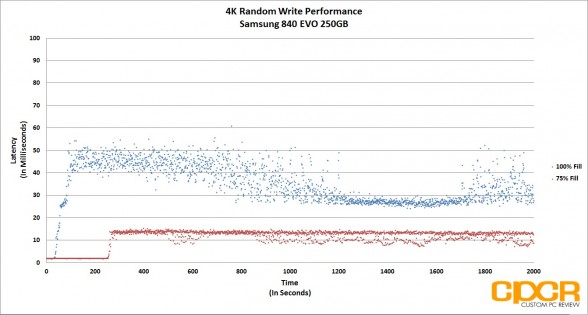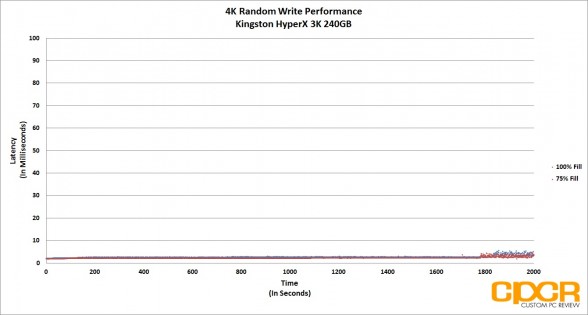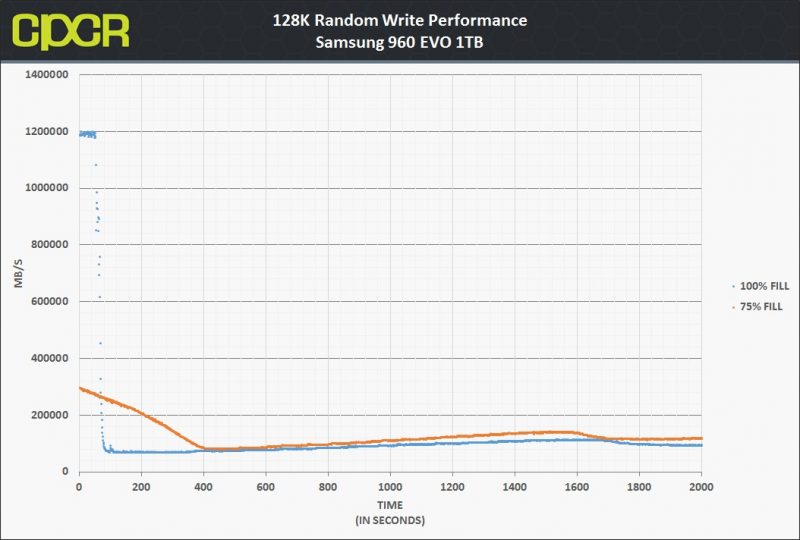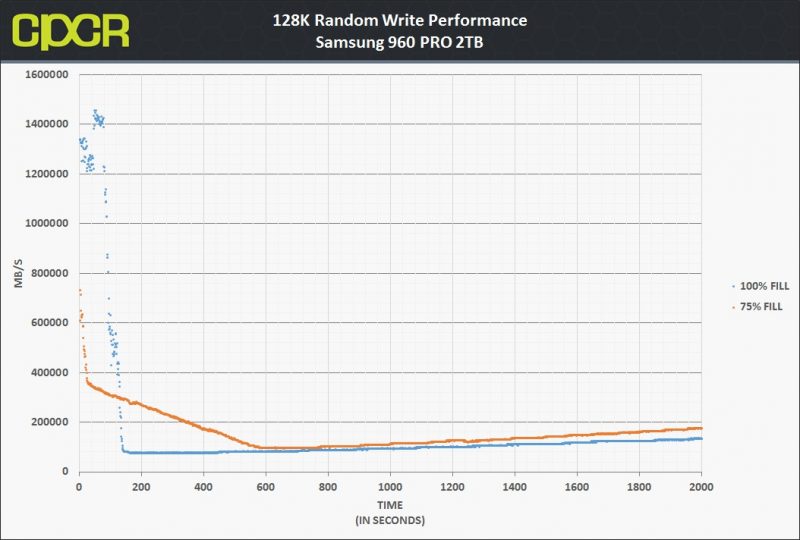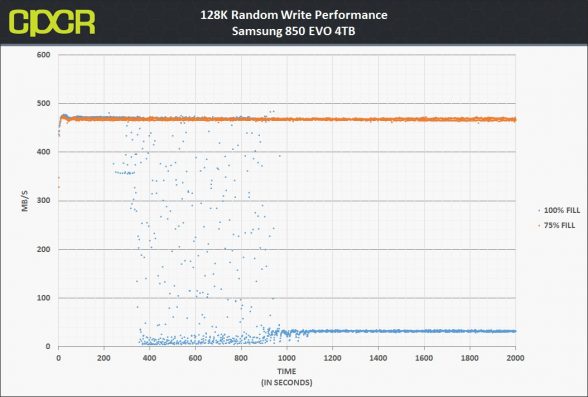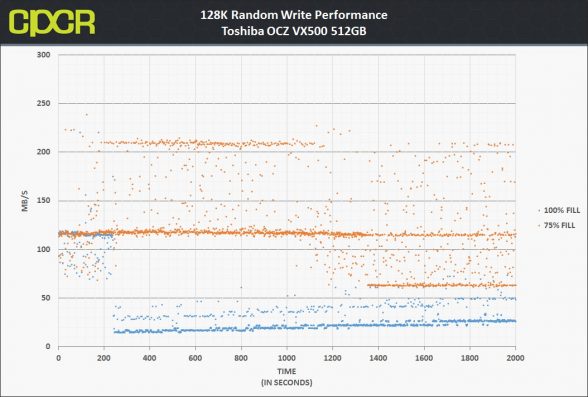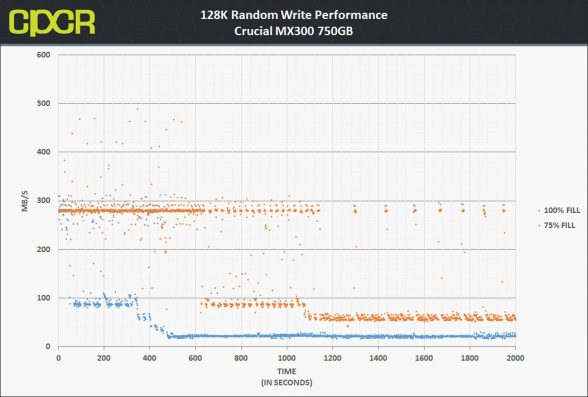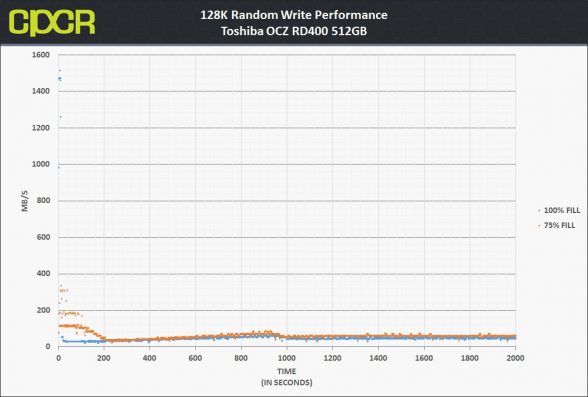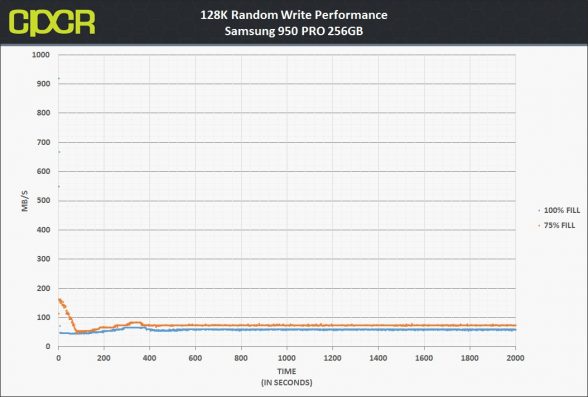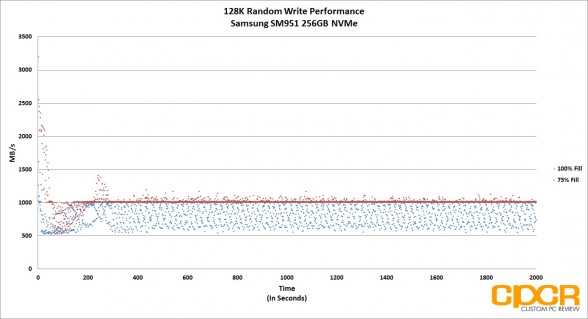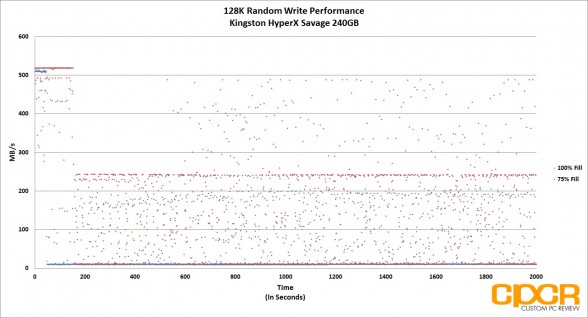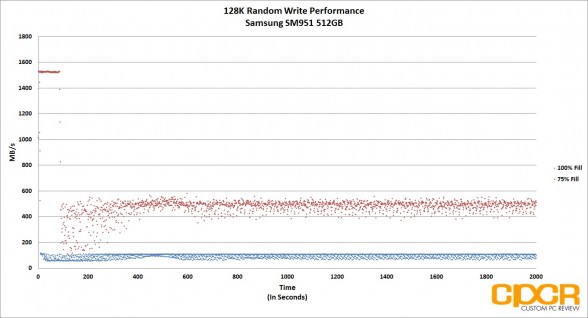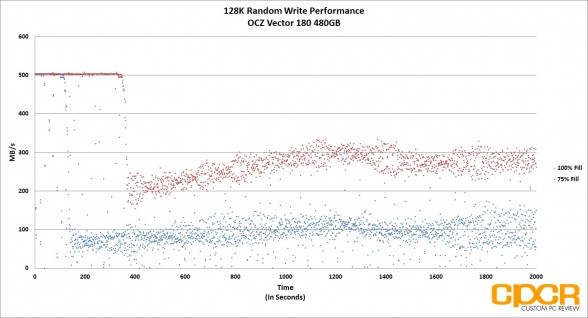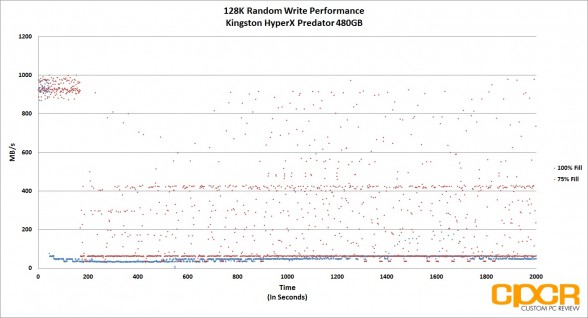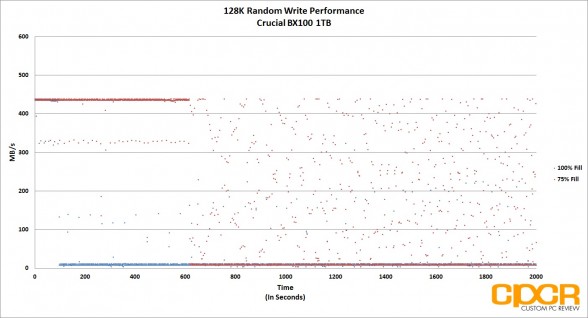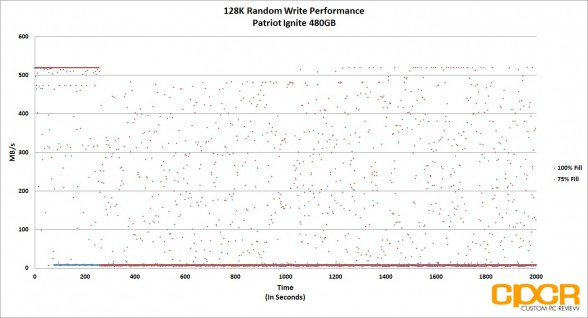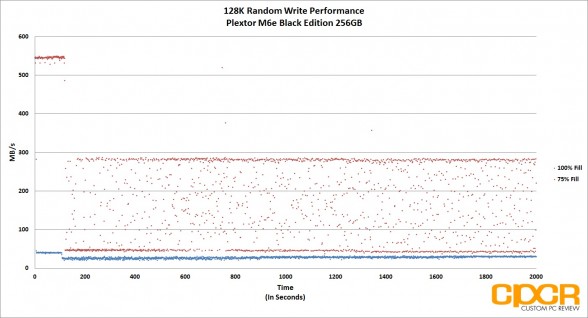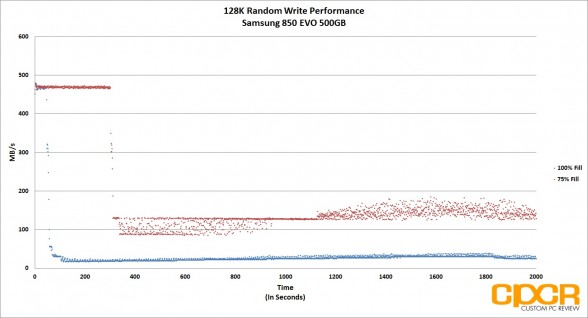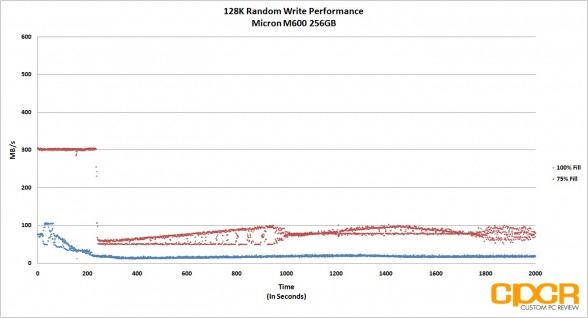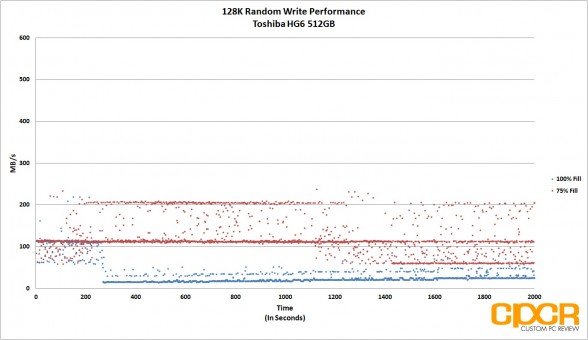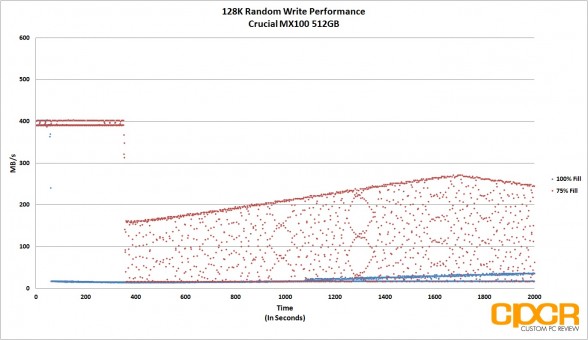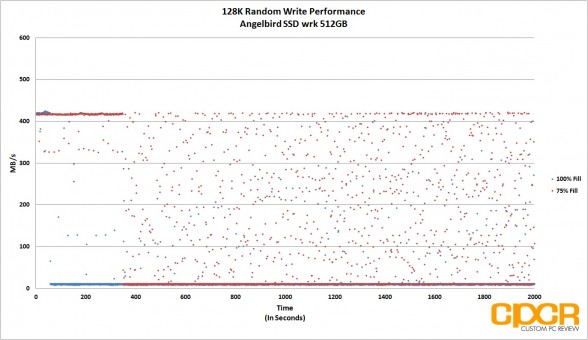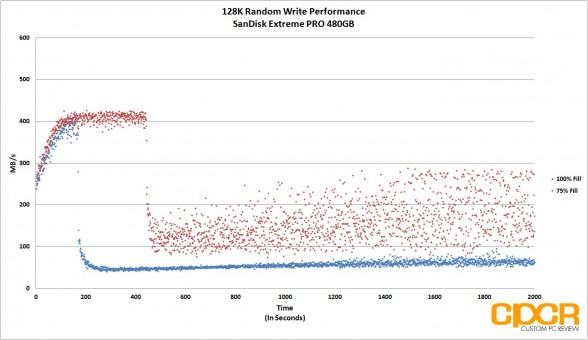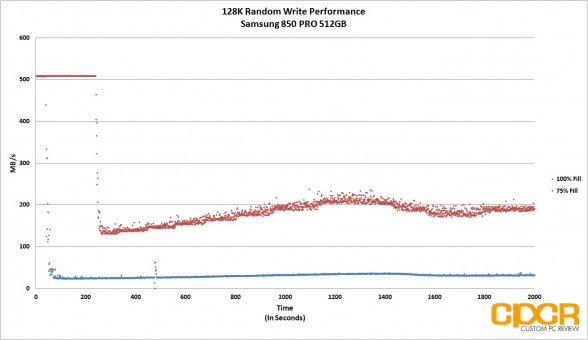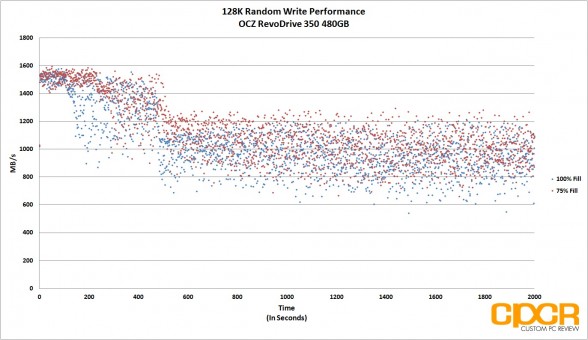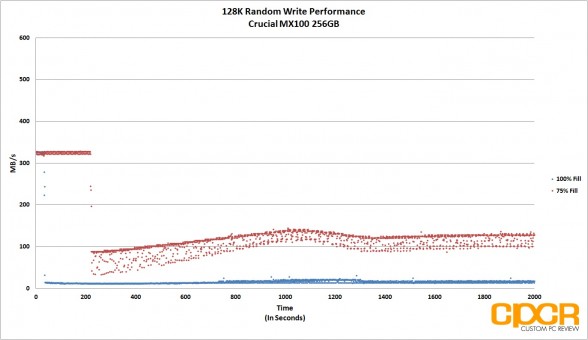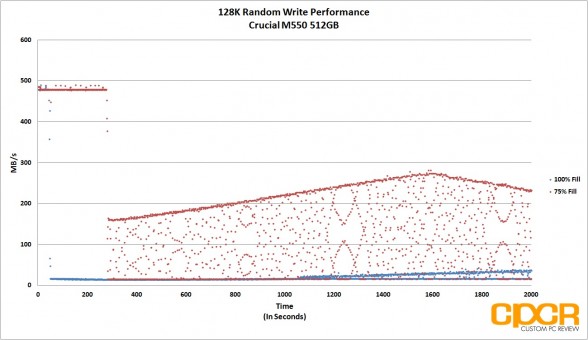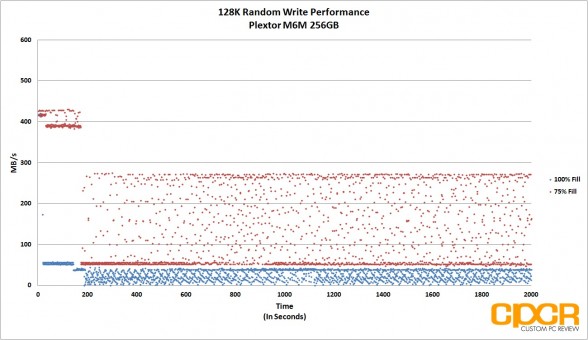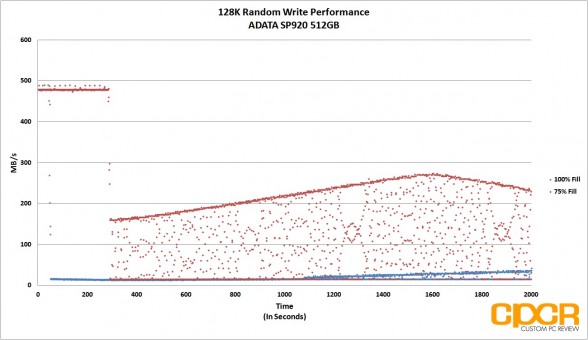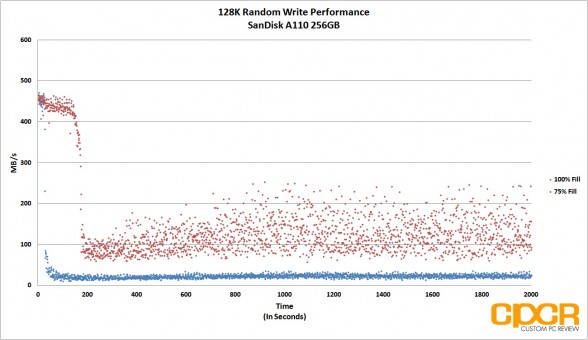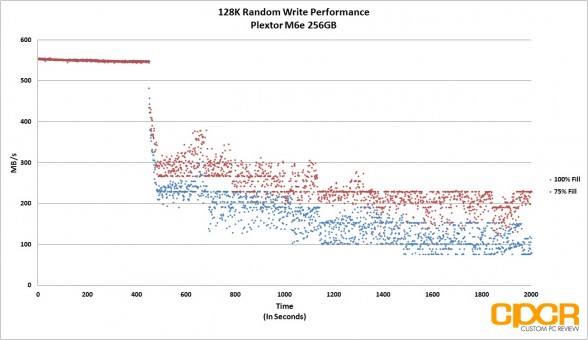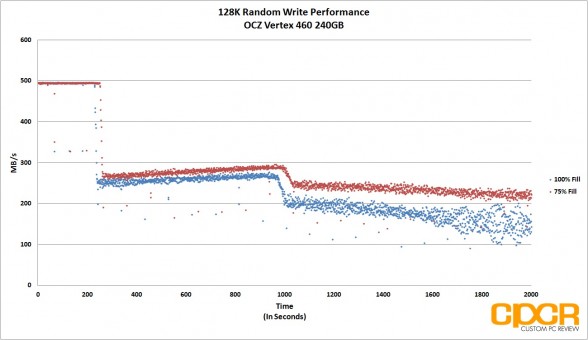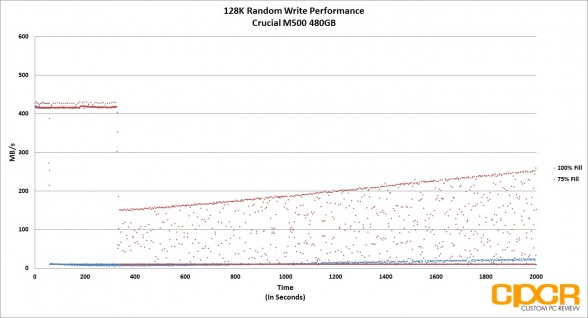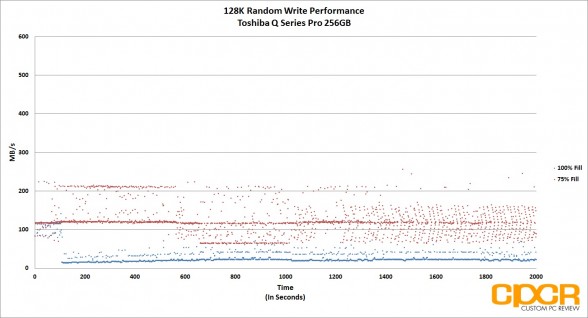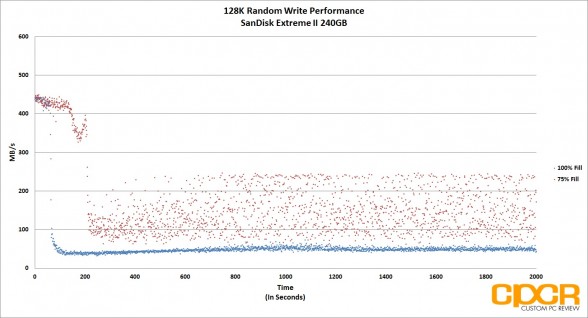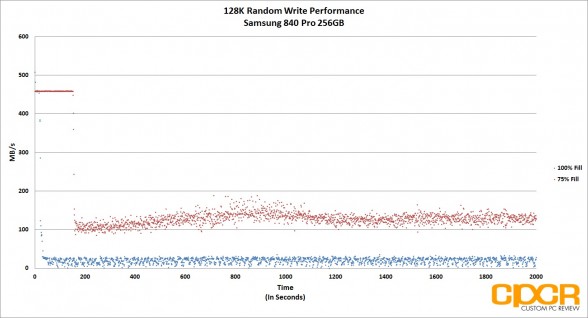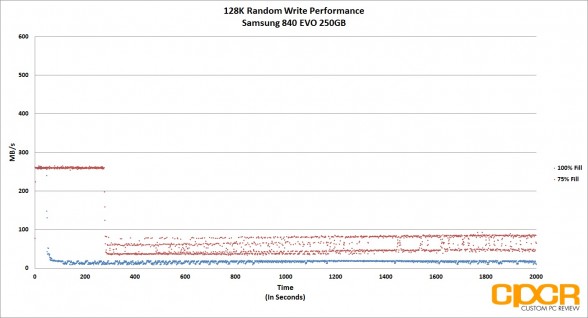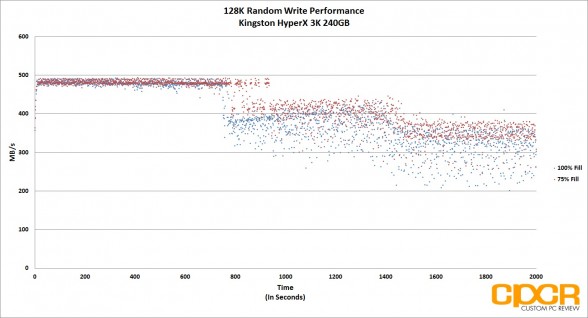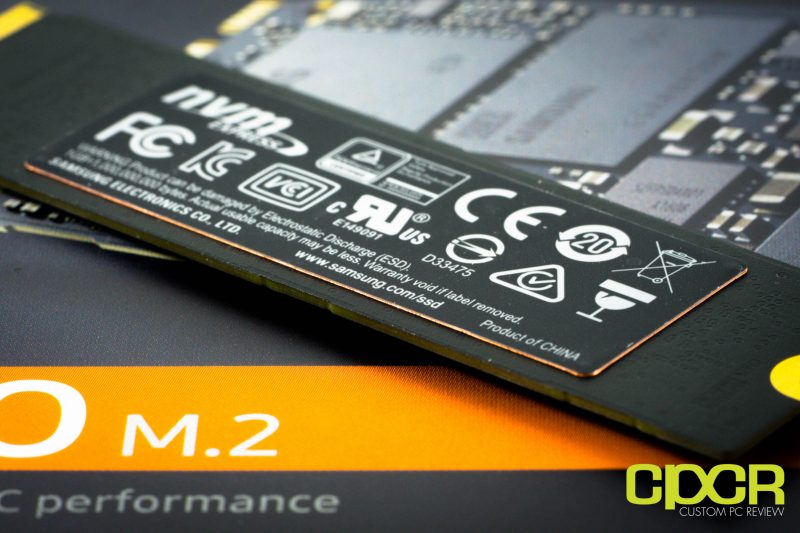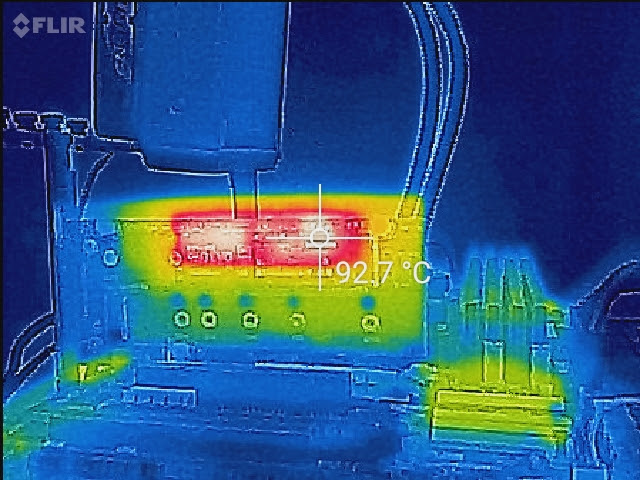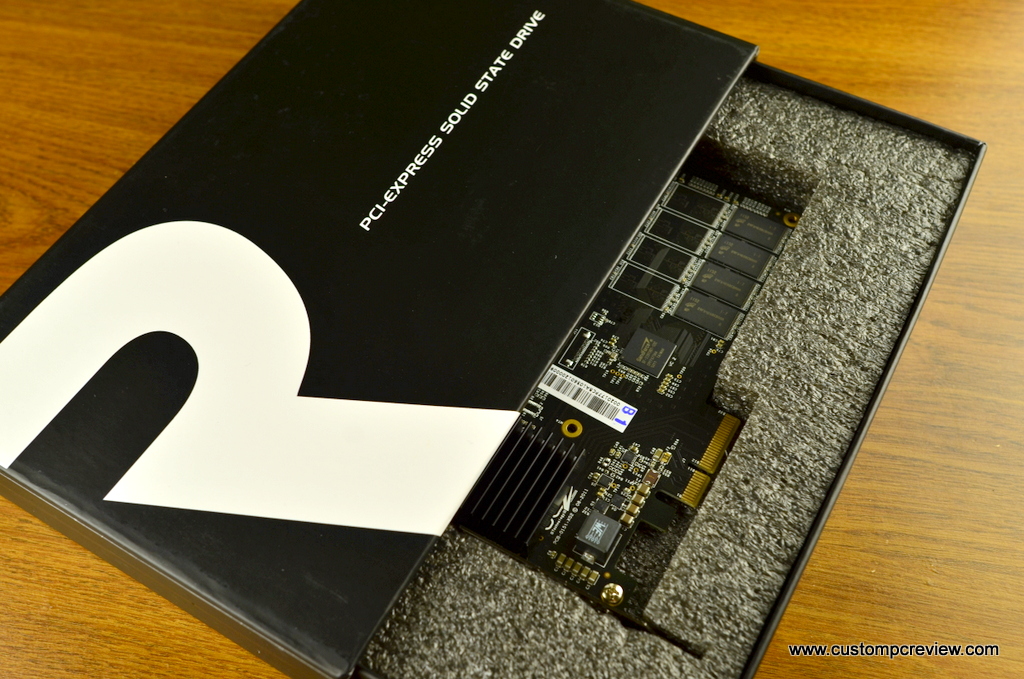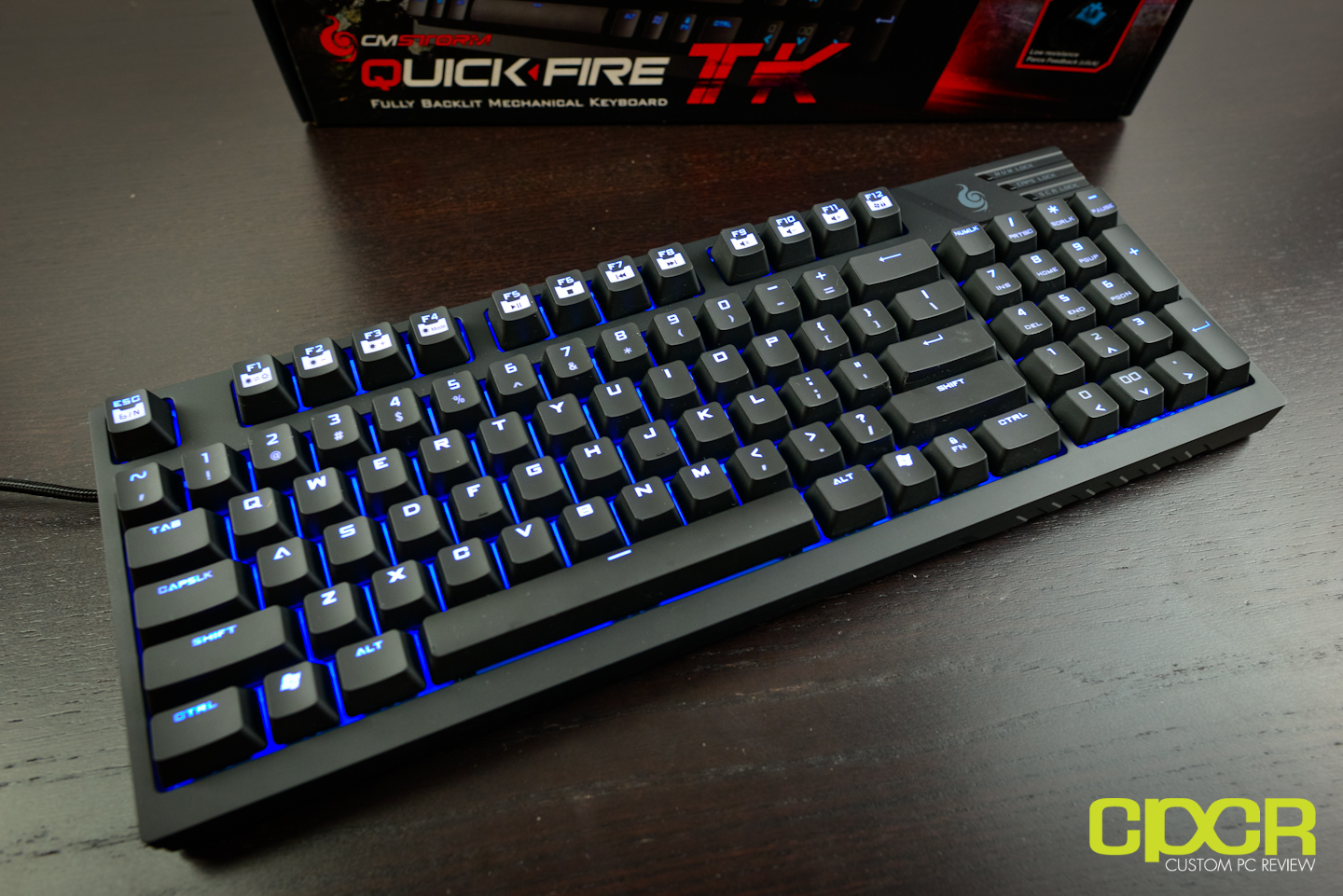[section label=”Introduction”]
TLC NAND and PCIe Done Right
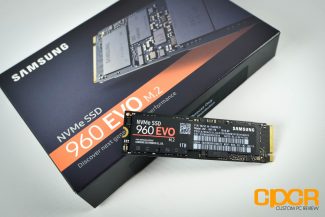 When Samsung launched the Samsung 960 series SSD at their annual SSD Global Summit back in September, they promised two new drives – the Samsung 960 PRO and the Samsung 960 EVO.
When Samsung launched the Samsung 960 series SSD at their annual SSD Global Summit back in September, they promised two new drives – the Samsung 960 PRO and the Samsung 960 EVO.
Last month, we reviewed the Samsung 960 PRO which is designed for performance enthusiasts and professionals. In our testing, it exceeded our expectations making it the fastest M.2 PCIe SSD we’ve ever tested to date. Unforutnately, the Samsung 960 EVO wasn’t available at the time however, Samsung was hopeful that early samples would be available soon.
Fast forward and today we’ll be reviewing the Samsung 960 EVO, which is Samsung’s first PCIe M.2 SSD designed for the mainstream market featuring Samsung’s 3-bit MLC (TLC) 3D V-NAND.
Samsung 960 Series Specifications
| Manufacturer | Samsung | |||||
|---|---|---|---|---|---|---|
| Model | 960 EVO | 960 PRO | ||||
| Capacity | 250GB | 500GB | 1TB | 512GB | 1TB | 2TB |
| Controller | Samsung Polaris | |||||
| NAND | Samsung 48-layer 256Gb TLC 3D V-NAND | Samsung 48-layer 256Gb MLC 3D V-NAND | ||||
| Sequential Reads | 3200 MB/s | 3500 MB/s | ||||
| Sequential Writes | 1500 MB/s | 1800 MB/s | 1900 MB/s | 2100 MB/s | ||
| 4K Random Read (QD32) | 330,000 | 380,000 | 330,000 | 440,000 | ||
| 4K Random Write (QD32) | 300,000 | 330,000 | 360,000 | 330,000 | 360,000 | |
| Interface | PCIe Gen 3 x4 | |||||
| Form Factor | M.2 2280 | |||||
| Encryption | AES 256-bit, TCGG/Opal | |||||
| Warranty | 3 Years Limited | 5 Years Limited | ||||
| Endurance | 100TB | 200TB | 400TB | 400TB | 800TB | 1200TB |
Looking at the specifications, the Samsung 960 EVO is another monster of a drive, similar to the Samsung 960 PRO. Powered by the Samsung Polaris controller and Samsung’s 48-layer TLC 3D V-NAND, performance here is rated at up to 3.2 GB/s sequential reads and 1.9 GB/s sequential writes while 4K random read/write performance is rated at up to 380,000/360,000 IOPS, depending on capacity.
Samsung 960 EVO Intelligent TurboWrite
| Capacity | 250GB | 500GB | 1TB |
|---|---|---|---|
| Default Size | 4 GB | 4 GB | 6 GB |
| Dynamic Size | 9 GB | 18 GB | 36 GB |
| Total Size | 13 TB | 22 GB | 42 GB |
| TurboWrite Performance | 1,500 MB/s | 1,800 MB/s | 1,900 MB/s |
| Native TLC Performance | 300 MB/s | 600 MB/s | 1,200 MB/s |
Like previous Samsung EVO SSDs, the Samsung 960 EVO features TurboWrite technology which re-purposes a portion of the TLC NAND onboard into a SLC cache. With the Samsung 960 EVO, Samsung has improved on their technology which is now known as Intelligent TurboWrite. Rather than using a fixed cache size, Intelligent TurboWrite is now able to dynamically adjust the cache to make it larger or smaller depending on how much data is being written. For the 1TB model, the cache can be as large as 42GB.
Like the Samsung 960 PRO, the Samsung 960 EVO will support AES-256 and TCG Opal encryption methods out of the box. Unfortunately, eDrive (IEEE 1667) support is still under consideration at this time.
Warranty on the Samsung 960 EVO is rated at up to 3 years with endurance ranging from 100TB to 400TB depending on capacity. For typical workloads, this should be plenty of endurance to outlast the usable life of the drive, especially in the higher capacity models.
[section label=”A Closer Look”]
A Closer Look at the Samsung 960 EVO 1TB
Here’s a look at the packaging for the Samsung 960 EVO 1TB.
Included in the packaging is the Samsung 960 EVO and some documentation.
Here’s a look at the Samsung 960 EVO 1TB. It uses a typical design with 2 NAND packages, DRAM and controller. Around the back of the drive is Samsung’s new heatspreader label which is designed to help distribute and reduce heat.
Here’s a look at the controller on the Samsung 960 EVO. Samsung is using their Polaris 5-core ARM controller which is the same controller on the Samsung 960 PRO.
NAND onboard is the 256Gb Samsung 48-layer TLC 3D V-NAND. Samsung is able to cram 16 dies per package here making a total of 512GB per package.
[section label=”Testing Setup, Drive Info, Software”]
Testing Setup
| System | CyberPowerPC Gamer Xtreme 4200 |
|---|---|
| CPU | Intel Core i7 4770K |
| Motherboard | ASUS Z87-A |
| Memory | Kingston HyperX Genesis 16GB DDR3 2133MHz |
| Graphics | Intel HD4600 Graphics |
| Storage | OCZ Vertex 4 256GB, Samsung 830 256GB |
| Power Supply | Corsair HX650 |
| Case | HSPC High Speed Tech Station |
| Optical Drive | ASUS OEM DVD Drive |
| Expansion Cards | Bplus M2P4S M.2 PCIe x4 Adapter |
| Operating System | Windows 10 Pro 64-bit & CentOS 6.4 |
Special thanks to CyberPowerPC, Kingston, OCZ Technology and HSPC for sponsoring our test bench!
Samsung Magician Utility
Here’s a look at a screenshot of Samsung Magician. Since the updated software still hasn’t been released yet, only a few details of the drive are available such as the firmware version. Today we’ll be reviewing the Samsung 960 EVO with firmware 1B7QCXE7.
[section label=”ATTO Disk Benchmark”]
Samsung 960 PRO 2TB Performance
ATTO Disk Benchmark v2.46
ATTO Disk Benchmark is one of the industry’s oldest and most popular benchmarks for testing disk read/write speeds. This benchmarks allows read and write testing using predefined block sizes and gives us a good idea of read/write speeds with different sized files. Most SSD manufacturers prefer using this benchmark when advertising SSDs as it tests using compressible data, which tends to yield best performance.
Performance Analysis
In ATTO Disk Benchmark, the Samsung 960 EVO shows some very high performance numbers with sequential reads and sequential writes reaching just under 3GB/s and 2GB/s respectively.
[section label=”AS SSD Benchmark”]
AS SSD Benchmark
AS SSD is a very commonly used benchmark used to measure SSD performance in sequential, 4K, 4K QD64 and latency. Tests are run using 100% incompressible data. AS SSD also outputs a final score at the conclusion of the test based off the overall performance of the drive.
Additionally, we also run AS SSD’s included compression benchmark which tests the drive using data of varying compressibility. Some SSDs such as SandForce based SSDs tend to perform significantly better when the data is compressible.
Performance Analysis
AS SSD performance is very good as well. Performance reached 2.6 GB/s sequential reads and 2 GB/s sequential writes which is one of the highest performance figures we’ve seen.
[section label=”Crystal Disk Mark”]
Crystal Disk Mark 3.0.1 x64
Crystal Disk Mark is another popular benchmark which allows us to measure both sequential read/write speeds as well as random read/write speeds. With this benchmark, tests can be run using both random fill (incompressible data) and 0 fill (compressible data). Realistically in typical computer usage scenarios, data being transferred will consist of a mixture of both incompressible and compressible data.
Performance Analysis
Crystal Disk Mark performance is very good as well. Sequential reads reached 3.2 GB/s sequential reads and 2 GB/s sequential writes. 4K read performance reached up to 50MB/s and 4K write performance reached up to 243MB/s.
[section label=”PC Mark 7″]
PC Mark 7 Storage Benchmark
The PC Mark 7 storage benchmark is a trace based benchmark that evaluates the SSD under many different real world environments such as gaming, multimedia editing, etc. PC Mark 7 uses a relatively light workload, which represents a typical mainstream client storage sub-system workload.
As of June 2015, we’ve also changed our comparison charts to use the PC Mark 7 Raw Secondary Storage Score. The raw score more effectively highlights performance differences between drives as it discounts idle time between tests.
Performance Analysis
In PC Mark 7, the Samsung 960 EVO 1TB reached a score of 12,417 making it one of the fastest SSDs we’ve tested coming in right above the Toshiba OCZ RD400.
[section label=”PC Mark 8″]
PC Mark 8 Expanded Storage Benchmark
With the introduction of PC Mark 8 2.0.228, Futuremark added the option for an Expanded Storage Benchmark which is literally designed to bring any storage system its absolute limits. The new PC Mark 8 Expanded Storage Benchmark takes around 24 hours to run and for our purposes, we’ll be using the consistency test which measures performance consistency, degradation tendency, and recovery speed of a storage system.
Consistency Test
Full details on the consistency test can be found in the PC Mark 8 Technical Guide here. For the more simplified version, the test is basically a near 24 hour, five phase benchmark – three of which we’ll be reporting on in our results below.
- Phase 1 is a precondition phase designed to “dirty” the drive with random data. The entire drive is filled twice to the capacity of the drive.
- Phase 2 is a degrade phase where the drive is hammered with tons of random data followed by a performance test run. This is done 8 times.
- Phase 3 is the steady state phase where the drive is once again hammered with tons of random data followed by a performance test run. This is done 5 times.
- Phase 4 is the recovery phase where the drive is given 5 minutes to rest followed by a performance test run. This is done 5 times.
- Phase 5 is the clean up phase where the drive is simply secure erased.
Performance Analysis
In the heavy workloads of PC Mark 8’s Expanded Storage Benchmark, the Samsung 960 EVO is a very strong performer as well especially in the lighter recovery workloads where the SLC cache was able help the drive outperform even the Samsung 960 PRO.
[section label=”FIO – Fresh Out of the Box”]
FIO (Flexible I/O Tester)
FIO, which stands for Flexible I/O Tester, is basically what its name says – a flexible I/O tester / I/O workload generator. Whereas all the benchmarking tools we’ve used previously are fantastic, easy to use benchmarking tools that provide a good snapshot of SSD performance, they do lack a lot of versatility, especially for more complex and in-depth operations such as custom queue depths, block sizes, test run times, etc. While the testing that follows may not pertain to typical consumer usage, they do help give us a much more in-depth look at each individual product’s strengths and weaknesses when they’re pushed to the limits.
FIO – FOB (Fresh Out of the Box) Testing
When SSDs are brand new and Fresh Out of the Box, they’re generally able to perform at or outperform their advertised speeds, but unlike traditional hard drives, performance on SSDs begin to degrade over time as they become more and more used. This is because while SSDs are new, all bits on the SSD are empty, so they can instantly be programmed with data. However, once data gets programmed in, even if it’s deleted in the filesystem the actual data will still stay programmed on the NAND itself unless some sort of garbage collection routine comes in to wipe the data. Unfortunately, in order to write new data onto “dirty” NAND, the NAND first needs to go through an erase cycle to erase the old data before a program cycle can happen to program new data, which as you may imagine takes more time than just a simple program cycle. As this only happens when writing new data onto the SSD, you’ll generally see less performance degradation on reads and more performance degradation on writes.
For our FOB testing, we run a secure erase on the SSD then run each test sans any preconditioning. This will provide us with the highest level of performance the SSD is capable of and is likely never to be seen ever again once the SSD goes into a used state.
Our testing will include 4K read testing, 4K write testing, and 4K 70/30 read/write mix testing at queue depths of 1,2,4,8,16,32,64,128,256. The reason we’ve also included 4K 70/30 read/write mix testing is simply because most real world workloads will always fall somewhere between 0% write and 100% write rather than one or the other. Since client usage is much more read heavy, we’ll be using the 70/30 read/write mix.
For general client usage, performance will fall somewhere between queue depths of 1-4 whereas servers and other enterprise applications will easily see queue depths of 32 or greater.
Performance Analysis
We were expecting some good performance from the Samsung 960 EVO here, but actual performance here was simply mindblowing. In our fresh out of the box testing, the Samsung 960 EVO was able to reach 610,000 IOPS 4K random reads and 340,000 IOPS 4K random writes definitely thanks in large part to the onboard SLC cache. Mixed workload performance was top notch as well as the drive was able to reach 495,000 IOPS. Clearly, the Samsung 960 EVO is an absolute monster for lighter workloads.
[section label=”FIO – Steady State”]
FIO – Steady State Testing
After prolonged use of an SSD, it will reach “steady state” where performance levels off to a minimum level. The FOB state is the “best case scenario” for SSD performance while “steady state” is going to be your worst. Here, we ran the exact same set of benchmarks we just completed in the FOB state; except this time around, we’ll be preconditioning the drive by filling 100% of the drive’s LBAs with two sequential passes of 128k data followed by hammering the drive for six hours with 4K random data prior to actual testing.
Performance Analysis
At steady state, performance was a lot tamer, but still one of the fastest SSDs we’ve tested to date, coming in right behind the Samsung 960 PRO. Performance here reached just shy of 350,000 IOPS 4K random reads and 25,000 IOPS 4K random writes which demonstrates the incredible performance of Samsung’s 3D TLC V-NAND.
[section label=”4K Random Write Consistency”]
FIO 4K Random Write Consistency Testing
Another one of the benefits of testing with FIO is the flexibility of running consistency tests, which is one of the most important metrics when considering SSDs going forward. Looking at the results of our benchmarks such as ATTO Disk Benchmark and Crystal Disk Benchmark, we can see that practically every top tier SSD is capable of saturating SATA 6Gb/s in the FOB state. However, what really differentiates these SSDs is their ability to hold a certain level of performance even after extended periods of use.
For our consistency testing, we used a fairly standard method, which includes both filling up 75% of capacity as well as 100% capacity twice with sequential 128k data followed by the actual test itself, which is simply running 4K random writes at a queue depth of 32. By recording the IOPS every second for 2,000 seconds, we’re able to get a good look at what kind of performance can be expected when the drive is relatively new, when it’s heading towards steady state, and when it’s actually in steady state.
Performance Analysis
As with other Samsung SSDs, write consistency on the Samsung 960 EVO is among the best we’ve seen.
[section label=”4K Random Write Latency”]
FIO 4K Random Write Latency Testing
Another metric that’s becoming increasingly important in SSDs is its ability to keep latency low despite being subjected to a heavy workload. Even if a SSD were capable of ultra high and ultra consistent IOPS performance, if latency were high, users would still feel that the drive is slow. Ideally, SATA SSDs should always be capable of latencies under 50ms, even during heavy workloads.
For latency testing, we’ll be using the exact same testing parameters as IOPS consistency testing, except instead of recording IOPS every second, we’ll be recording latency.
Performance Analysis
Latency is very good as well. Latency is kept under 2ms even at its worst.
[section label=”128K Random Write Consistency”]
FIO 128K Random Write Consistency Testing
In addition to testing 4K random write consistency, we’ll also test for 128K random write consistency to see how well a SSD is able to hold itself to a level of performance when getting hammered with larger file transfers.
Testing methodology is very similar to our testing for 4K random write consistency. We use a fairly standard method, which includes both filling up 75% of capacity as well as 100% capacity twice with sequential 128k data followed by the actual test itself, which is running 128K random writes at a queue depth of 32. By recording the IOPS every second for 2,000 seconds, we’re able to get a good look at what kind of performance can be expected when the drive is relatively new, when it’s heading towards steady state, and when it’s actually in steady state.
Performance Analysis
Once again, we see amazing write consistency here.
[section label=”Temperature Analysis”]
Temperature Analysis
Similar to the Samsung 960 PRO, the Samsung 960 EVO also features Samsung’s new heatspreader label which helps reduce temperatures of the drive.
In testing, we noticed that the Samsung 960 EVO carries multiple heat thresholds which prompts reductions of performance once these thresholds are reached. The first threshold is in the mid-70°C range while the second threshold is somewhere in the mid-90°C range.
Here’s a look at the Samsung 960 EVO with a thermal camera. Thanks to the heatspreader, the heat is distributed across the entire length of the PCB very well.
[section label=”Conclusion”]
Samsung 960 EVO 1TB Conclusions
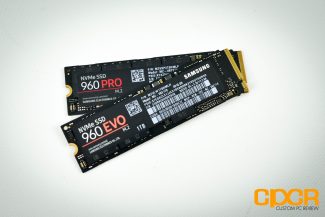 Given the fact that the Samsung 960 PRO destroyed every other consumer SSD on the market in every single performance metric, we had very high expectations for the Samsung 960 EVO and with testing out of the way, I can safely say that it has met and exceeded those expectations.
Given the fact that the Samsung 960 PRO destroyed every other consumer SSD on the market in every single performance metric, we had very high expectations for the Samsung 960 EVO and with testing out of the way, I can safely say that it has met and exceeded those expectations.
Quite simply, the Samsung 960 EVO is a beast – just like its “Pro” grade brother. In our testing we were able to reach a whopping 3 GB/s sequential reads and 2.2 GB/s sequential writes which isn’t much lower than the performance we saw in the Samsung 960 PRO. What was phenomenal is performance in lighter workloads. In our fresh out of the box testing, the Samsung 960 EVO was able to reach a staggering 610,000 IOPS in 4K random reads, which is even faster than the Samsung 960 PRO. While the Samsung 960 EVO isn’t able to maintain this level of write performance for as long as the Samsung 960 PRO for write heavy applications, this does indicate that the 960 EVO may actually perform better in typical light consumer workloads such as internet browsing, consuming media, or gaming as a result of its ultra-fast SLC cache.
| Manufacturer | Samsung | ||
|---|---|---|---|
| Model | 960 EVO | ||
| Capacity | 250GB | 500GB | 1TB |
| MSRP | $129 | $249 | $479 |
| Price/GB | $0.52 | $0.50 | $0.48 |
| Check Pricing | Click Here | Click Here | Click Here |
MSRP pricing on the Samsung 960 EVO is expected to be somewhere in the $0.48-$0.52/GB range which is likely to be slightly lower as the drive gets closer to launch. While Samsung advertises the Samsung 960 EVO as a mainstream SSD alternative to the Samsung 960 PRO, make no mistake its performance capabilities is definitely in the high end when compared to competing SSDs on the market and the higher price does reflect this. Unfortunately this makes it still out of reach for most consumers, but those who have the extra to spend will find the Samsung 960 EVO a superior choice even when compared to MLC based M.2 PCIe solutions from competitors.
Despite being the little brother of the Samsung 960 PRO, the Samsung 960 EVO definitely doesn’t feel under-powered at all. For most consumers, the Samsung 960 EVO will easily be more than enough and those few who need higher sustained performance, higher endurance or 2TB capacities will have the option of the Samsung 960 PRO. Those still on the fence for a M.2 PCIe SSD, the time is now. Of course, pending when these drives become available hopefully sometime later this year. Highly recommended!
Sample provided by: Samsung
Availability: Amazon

